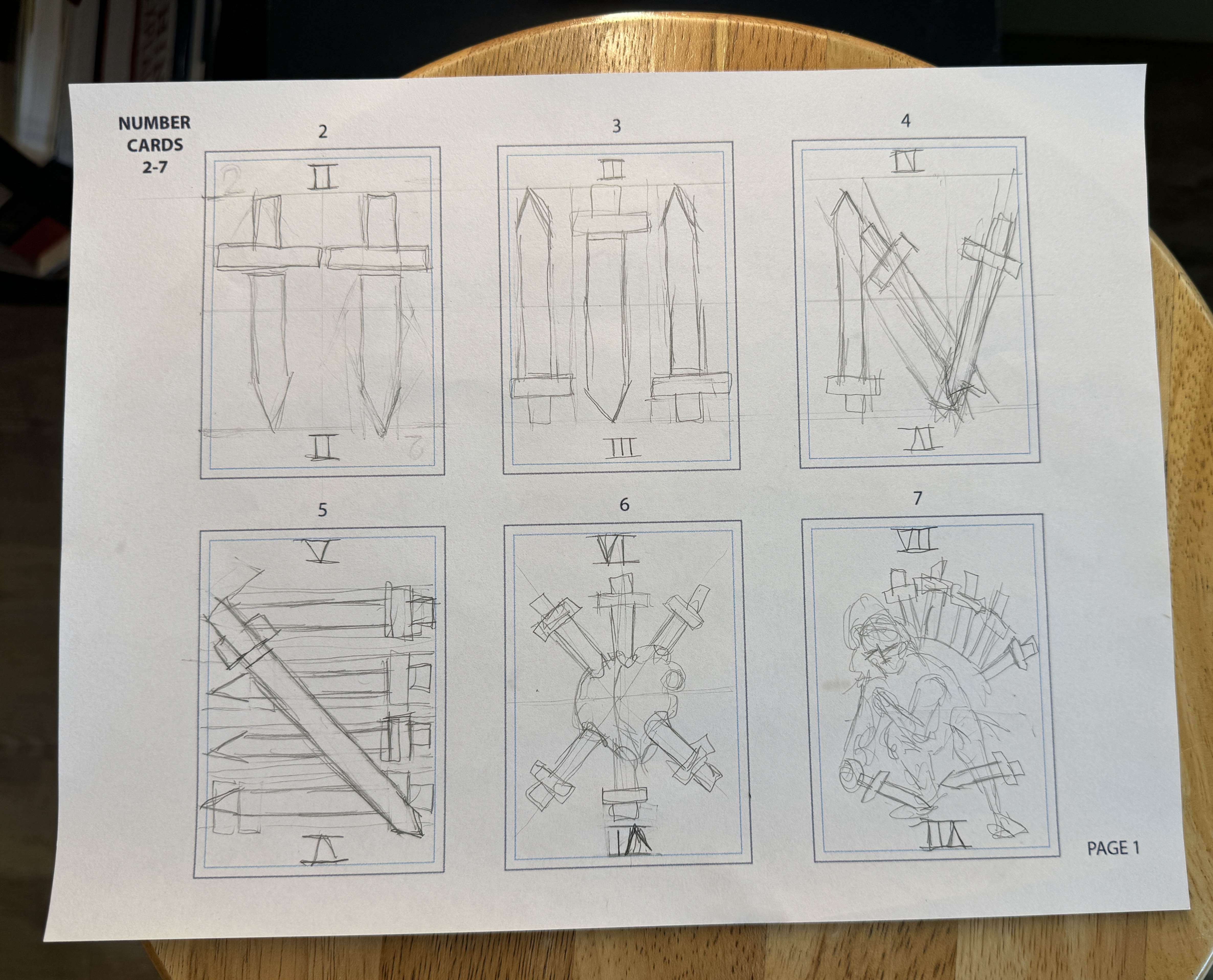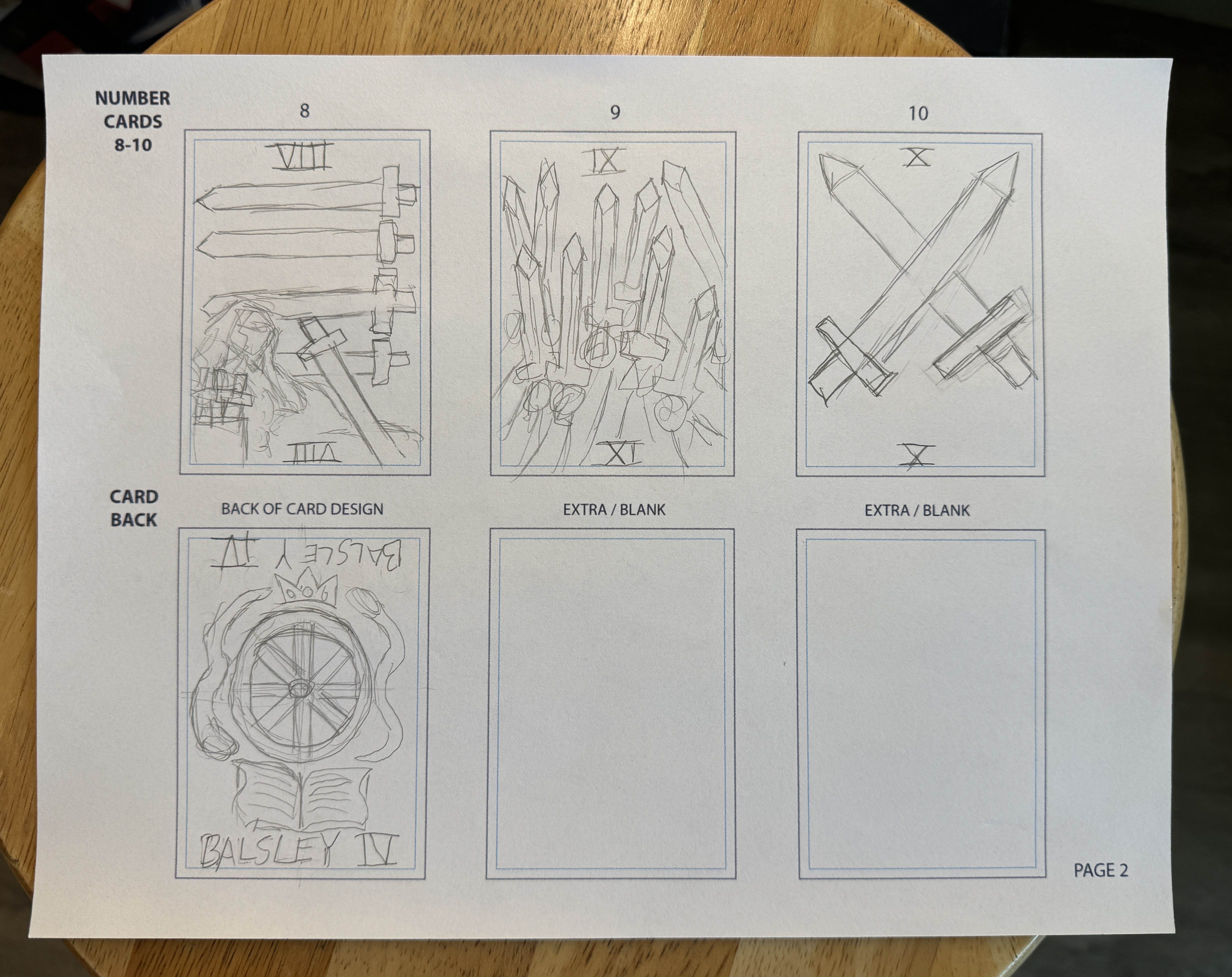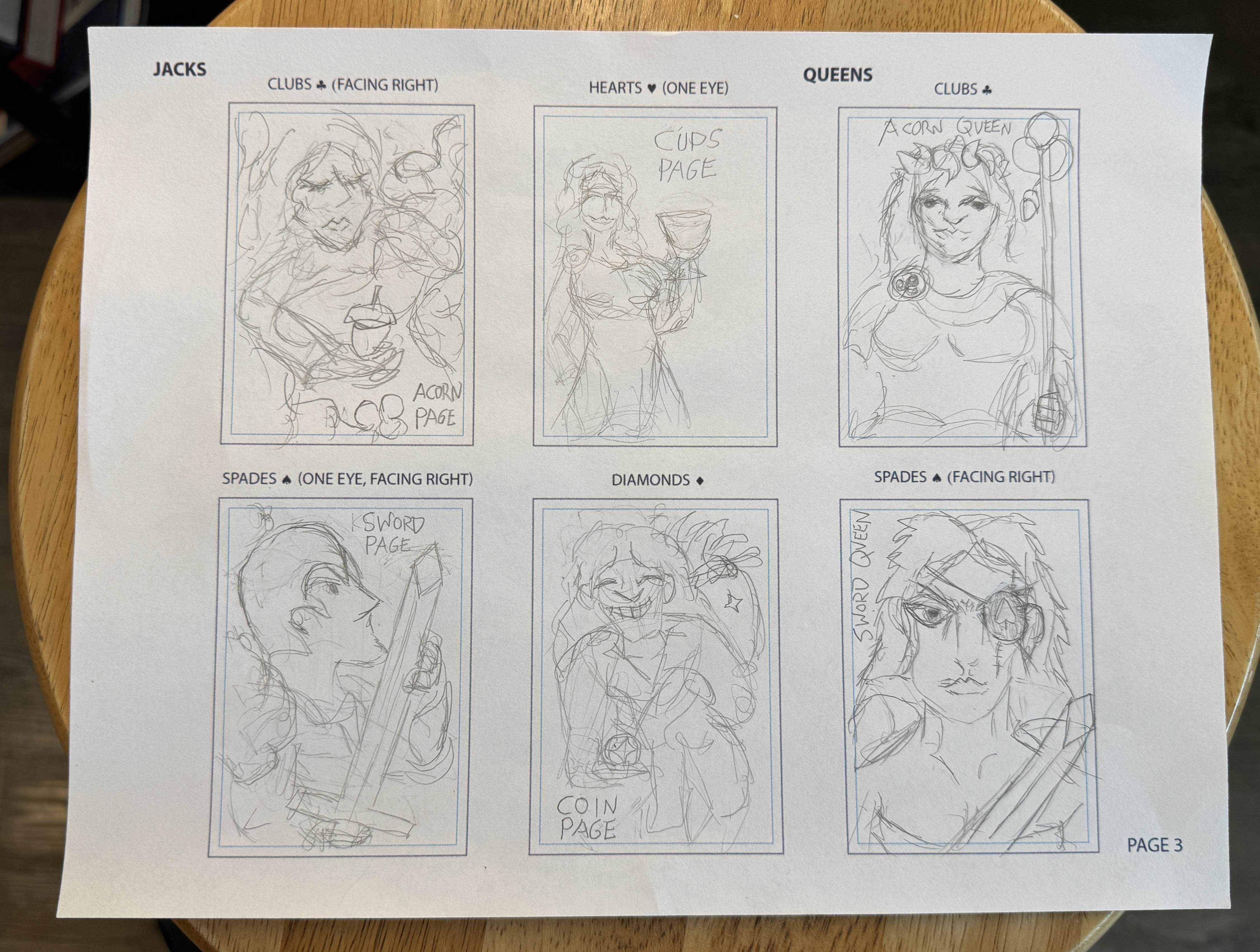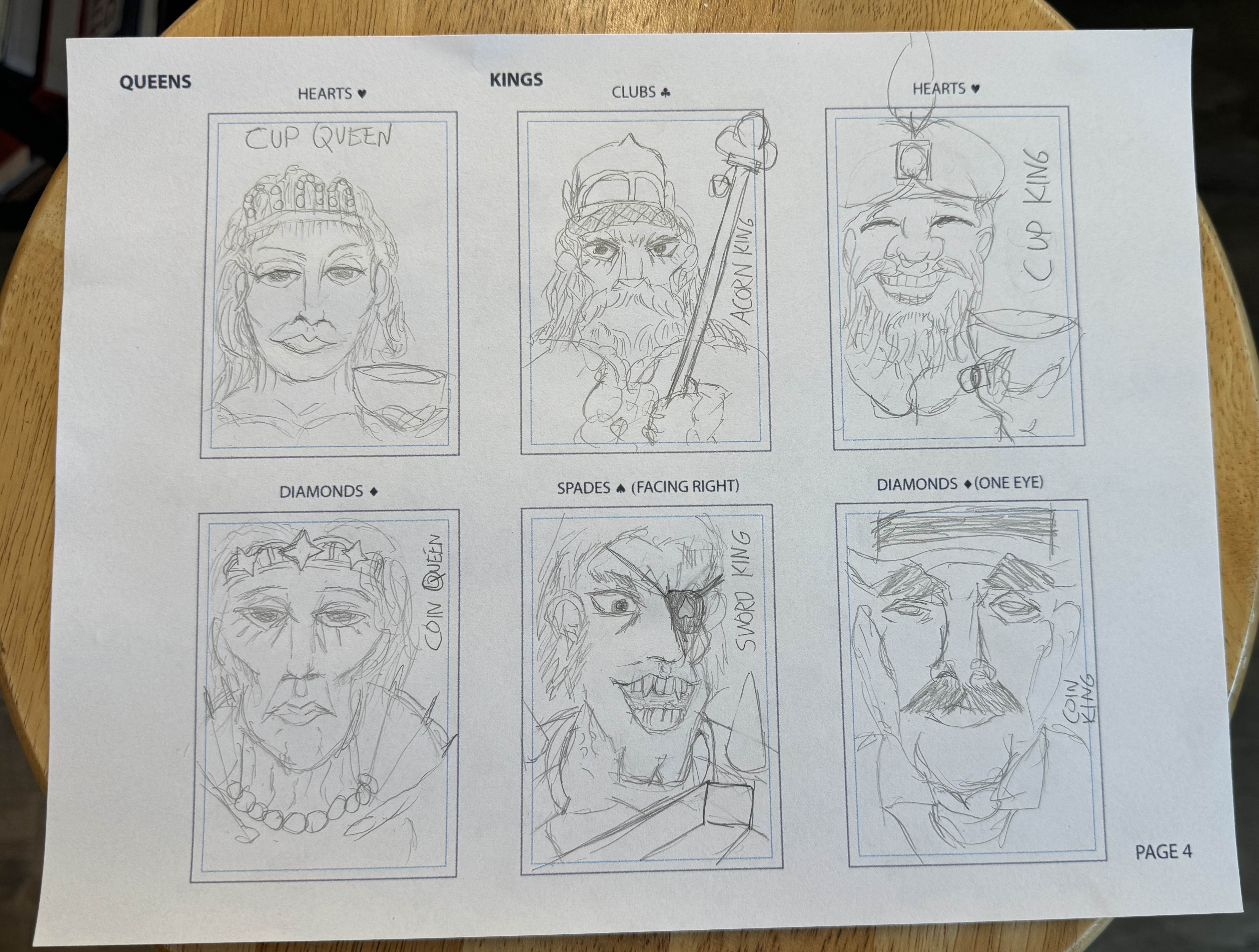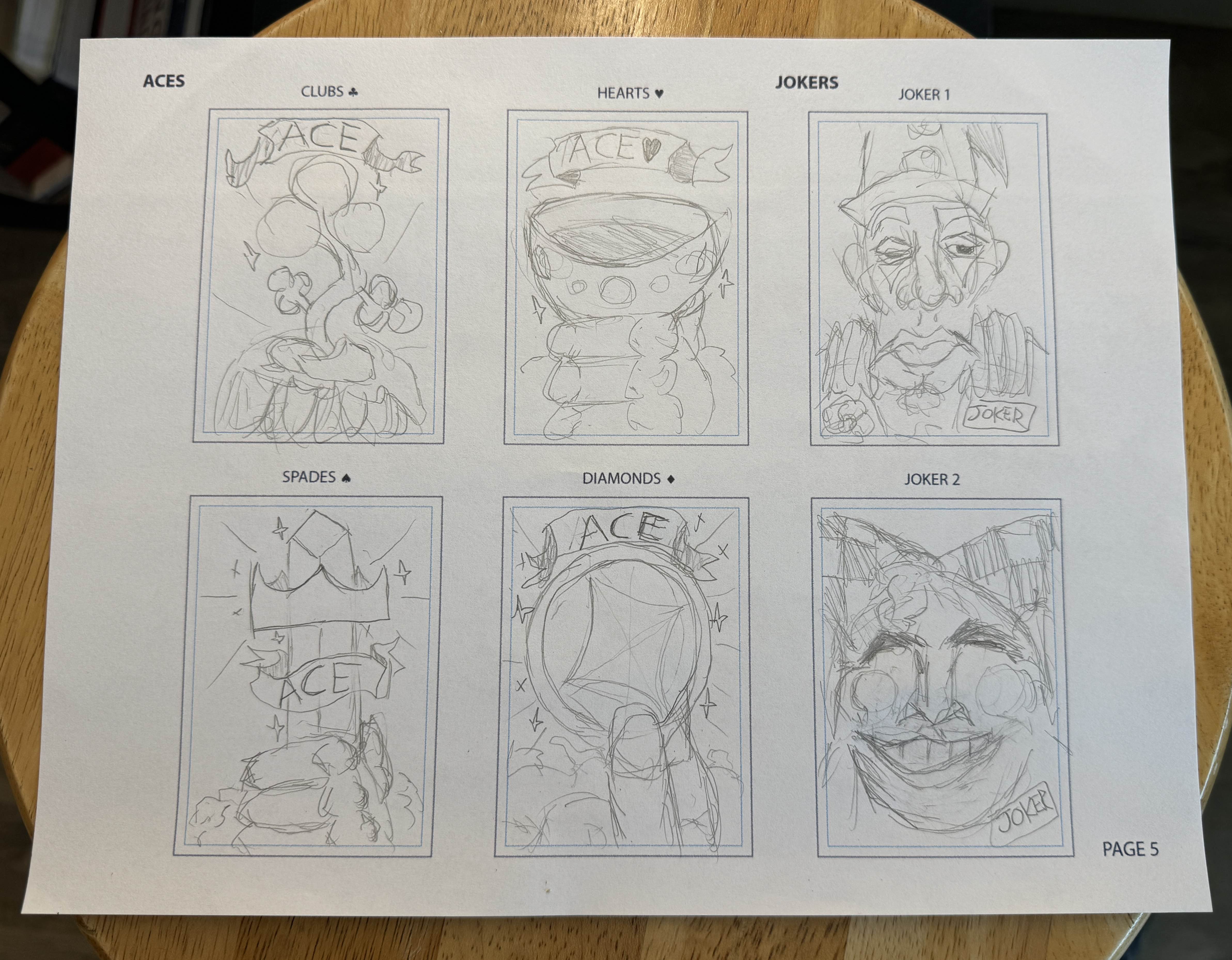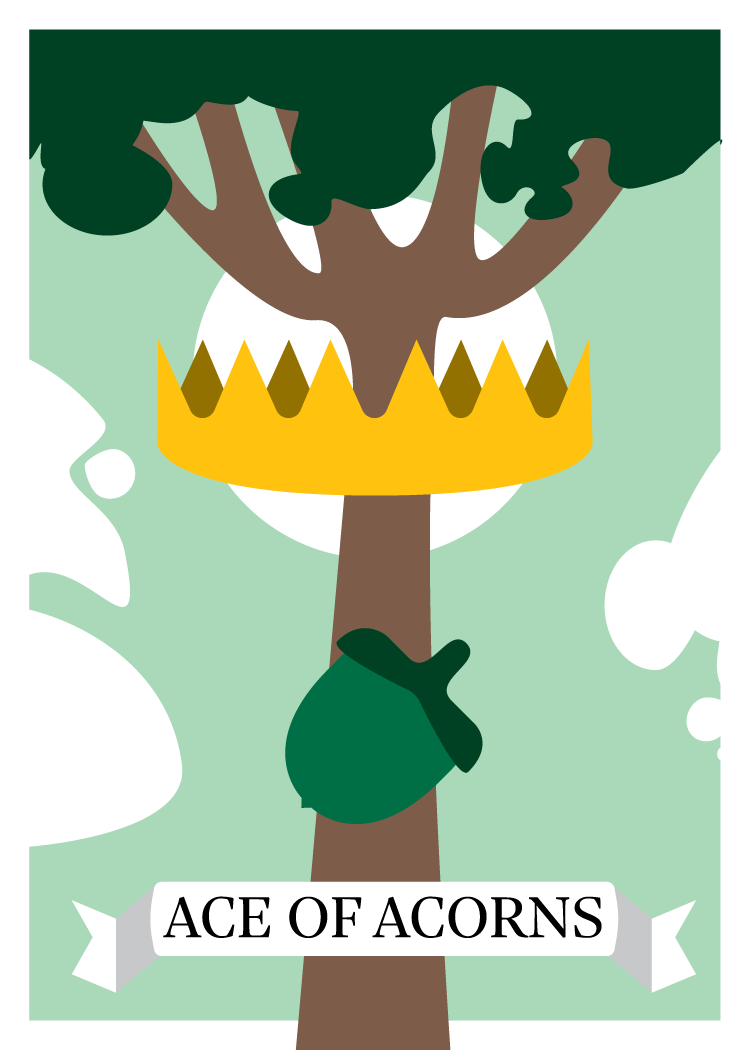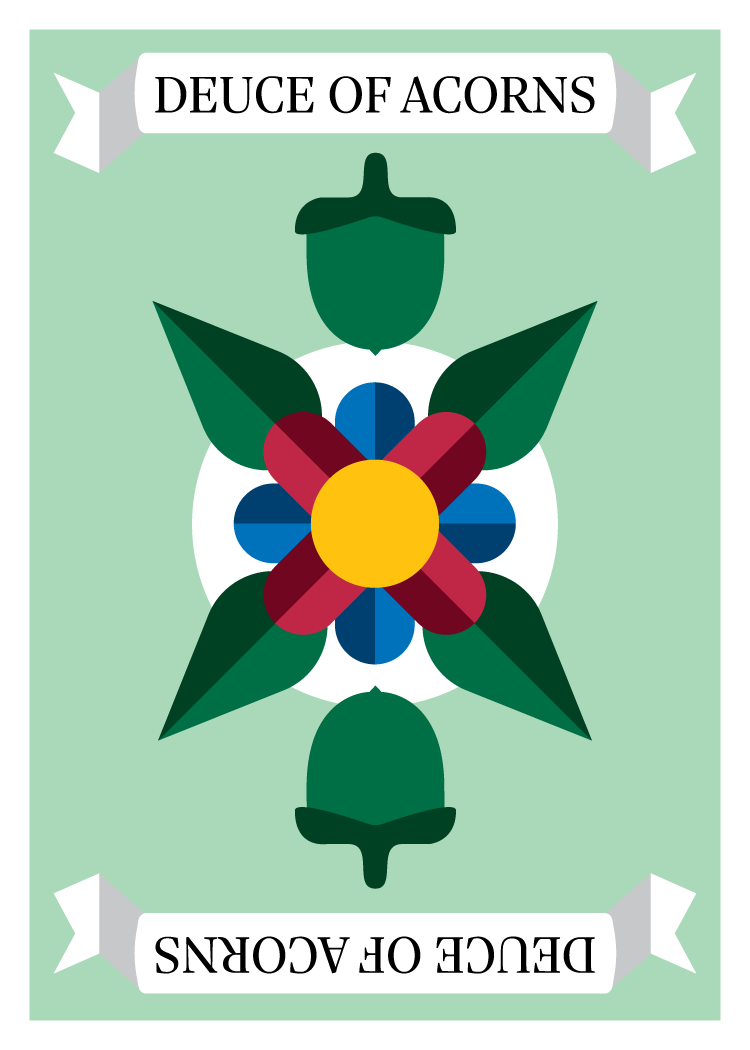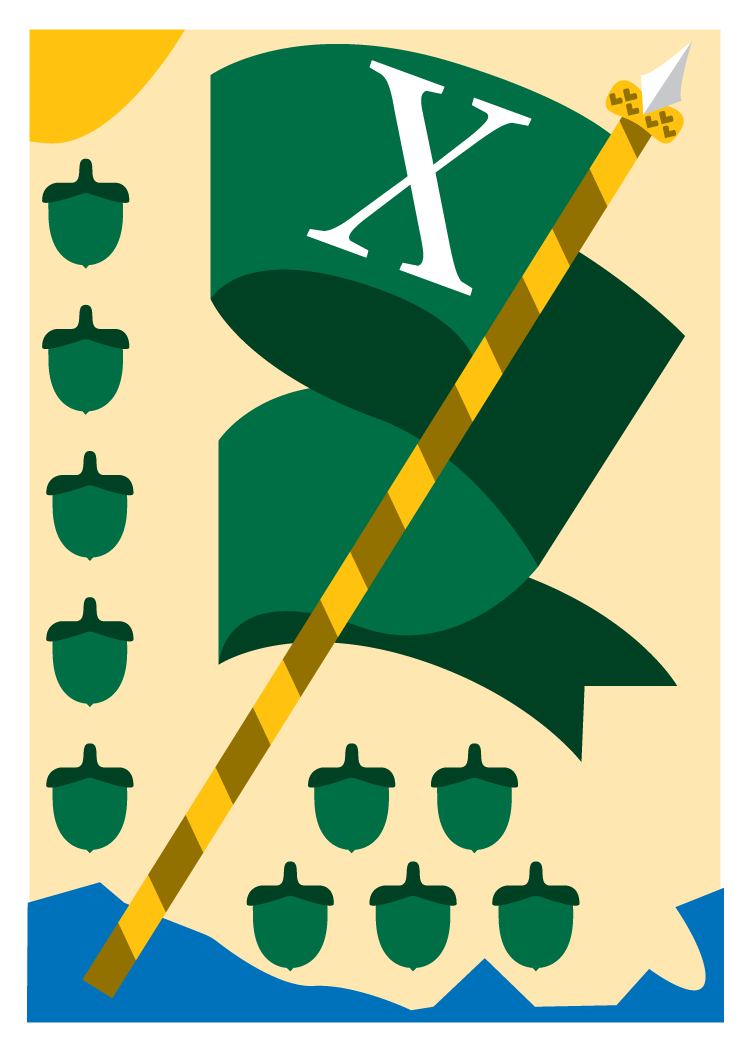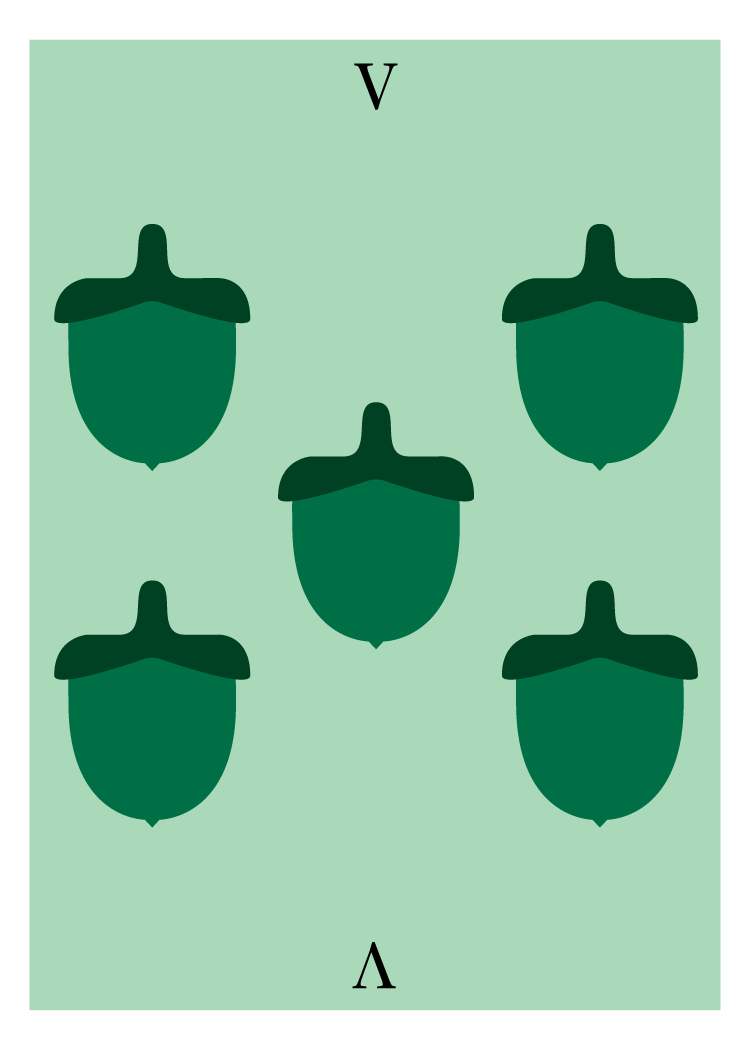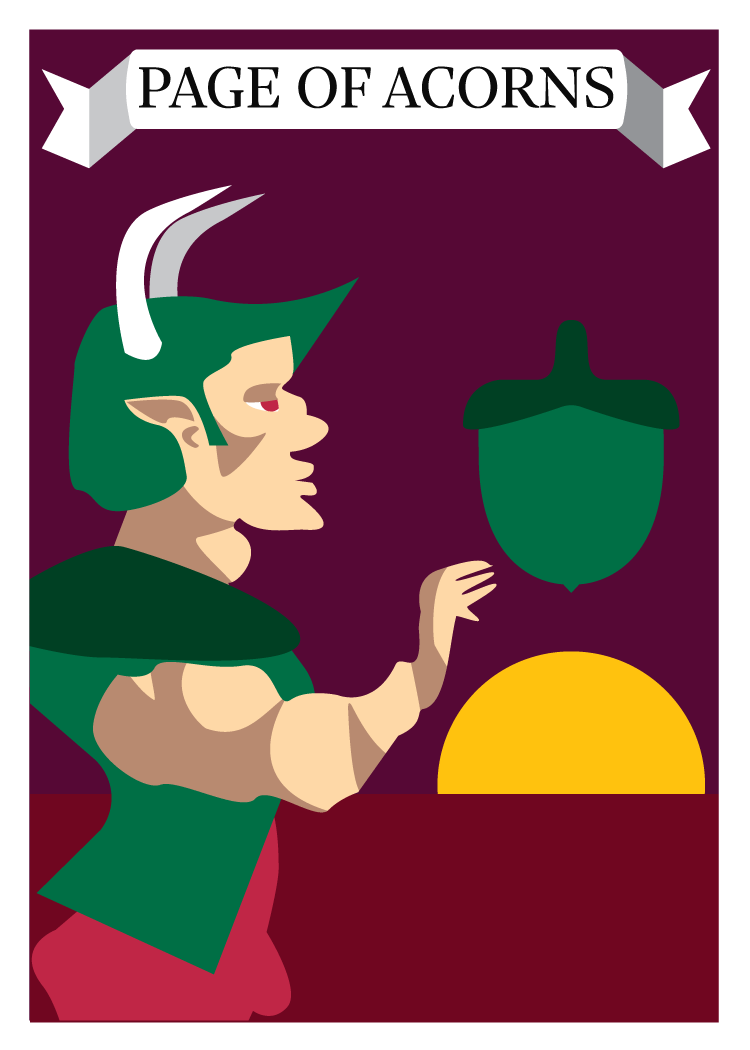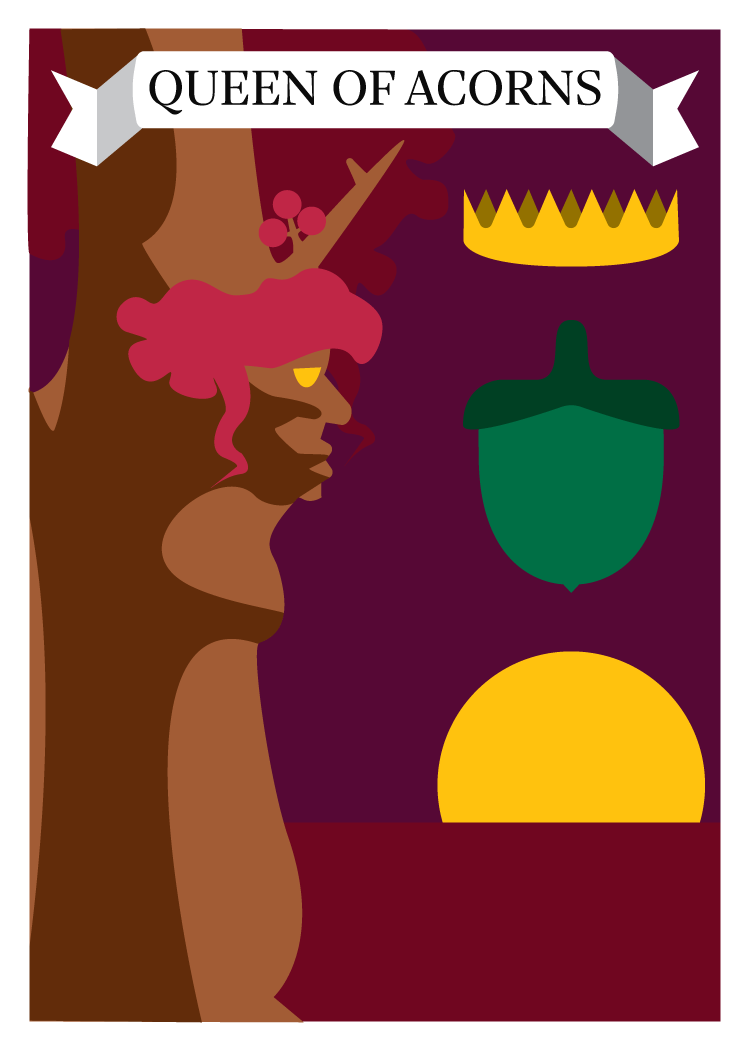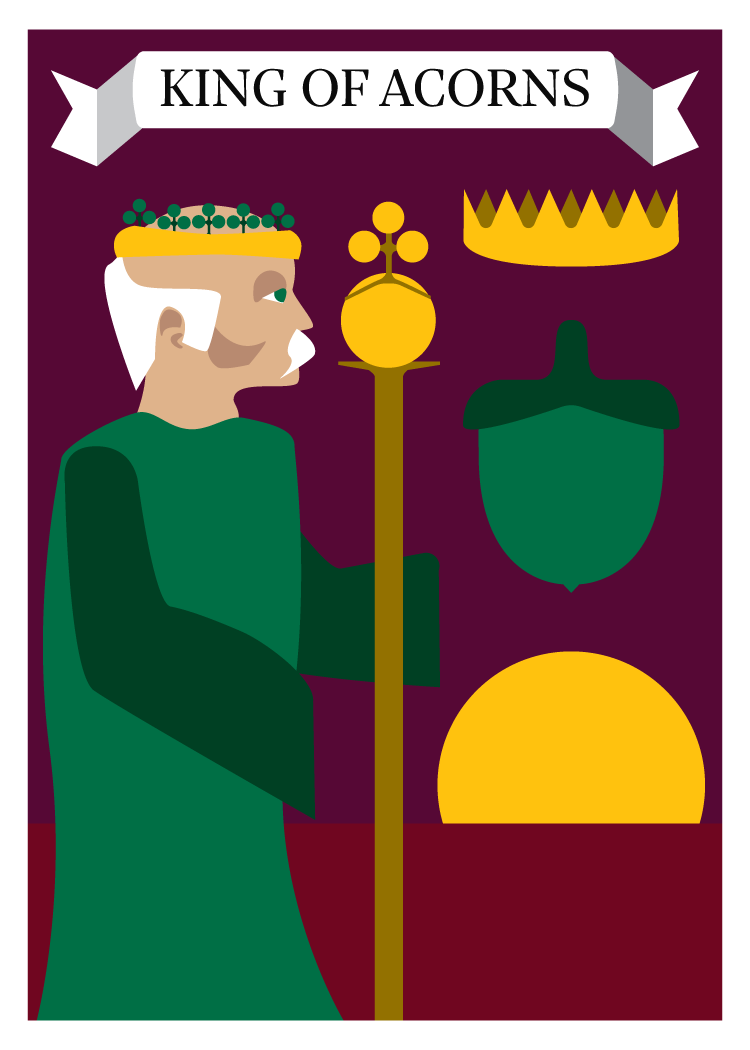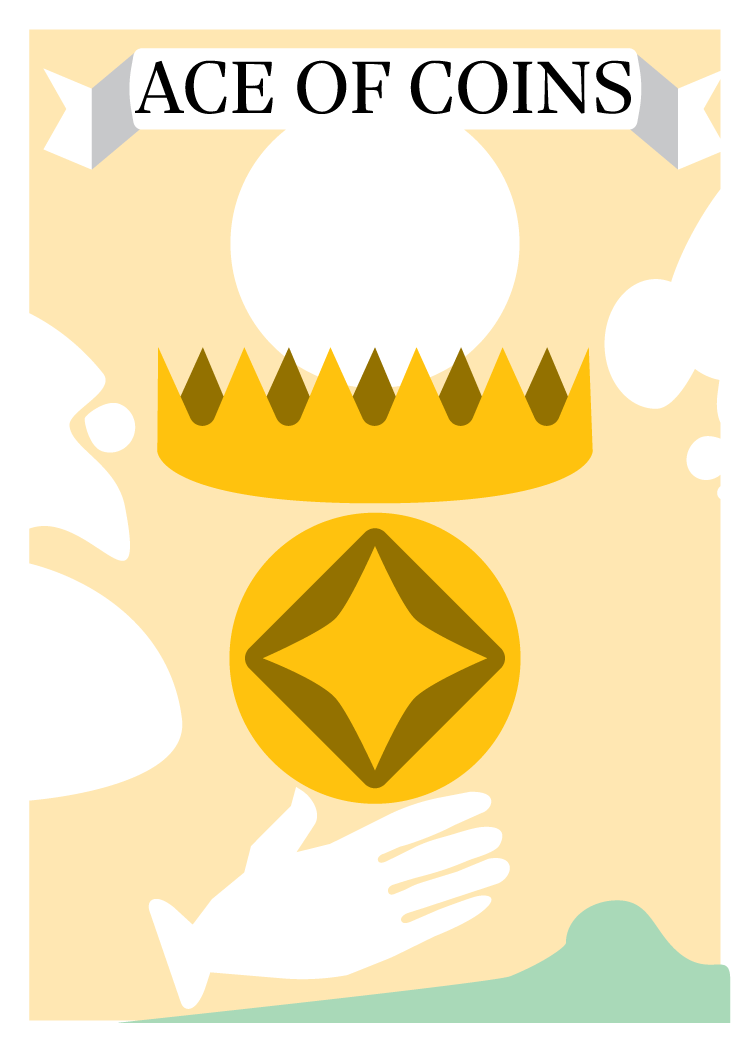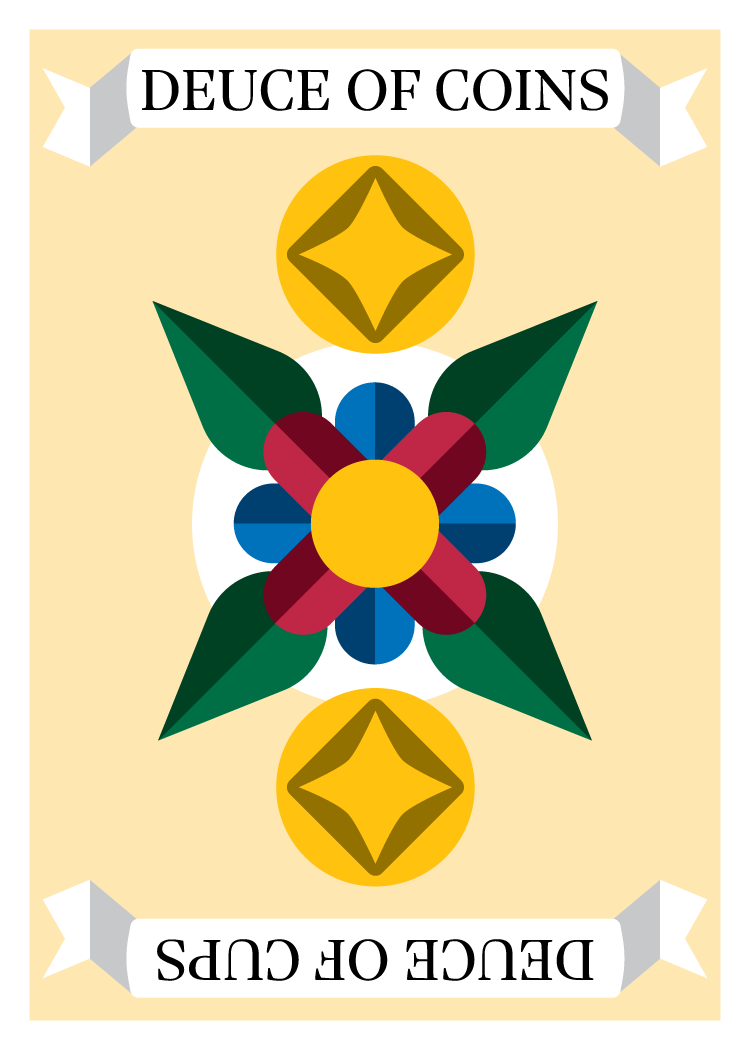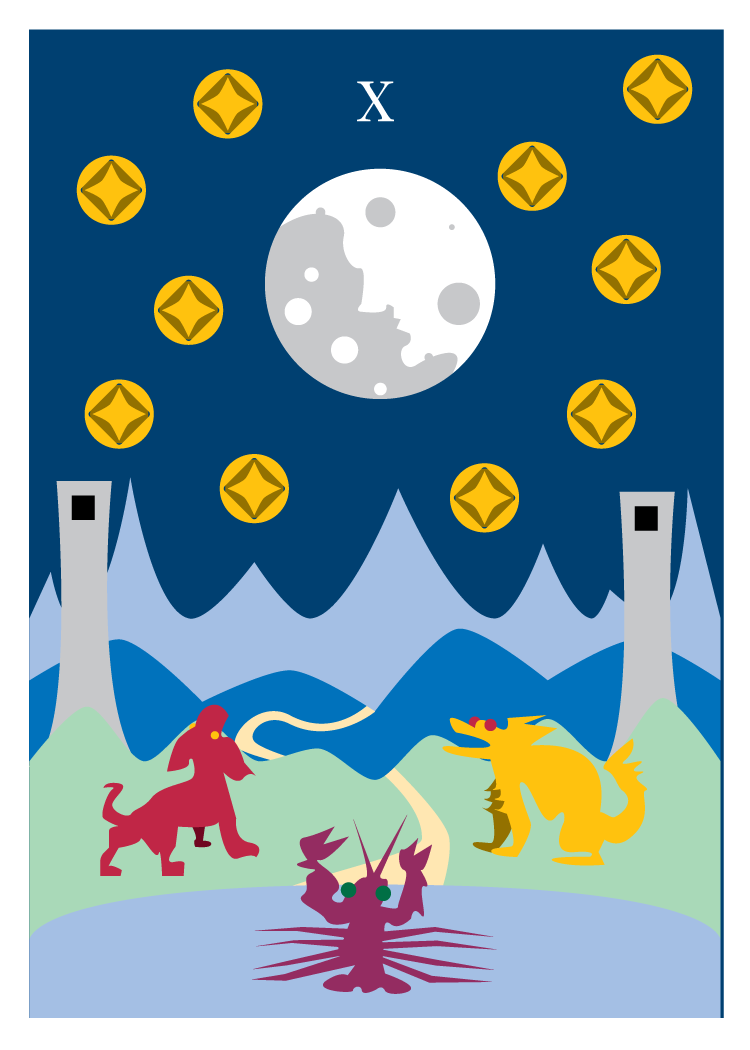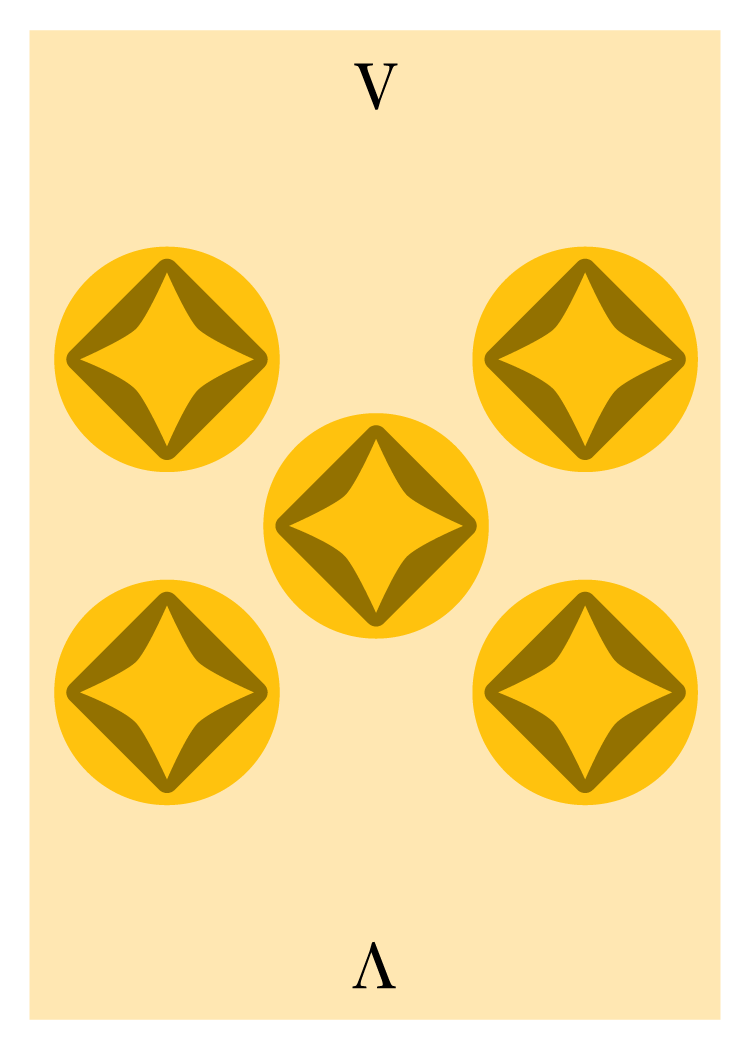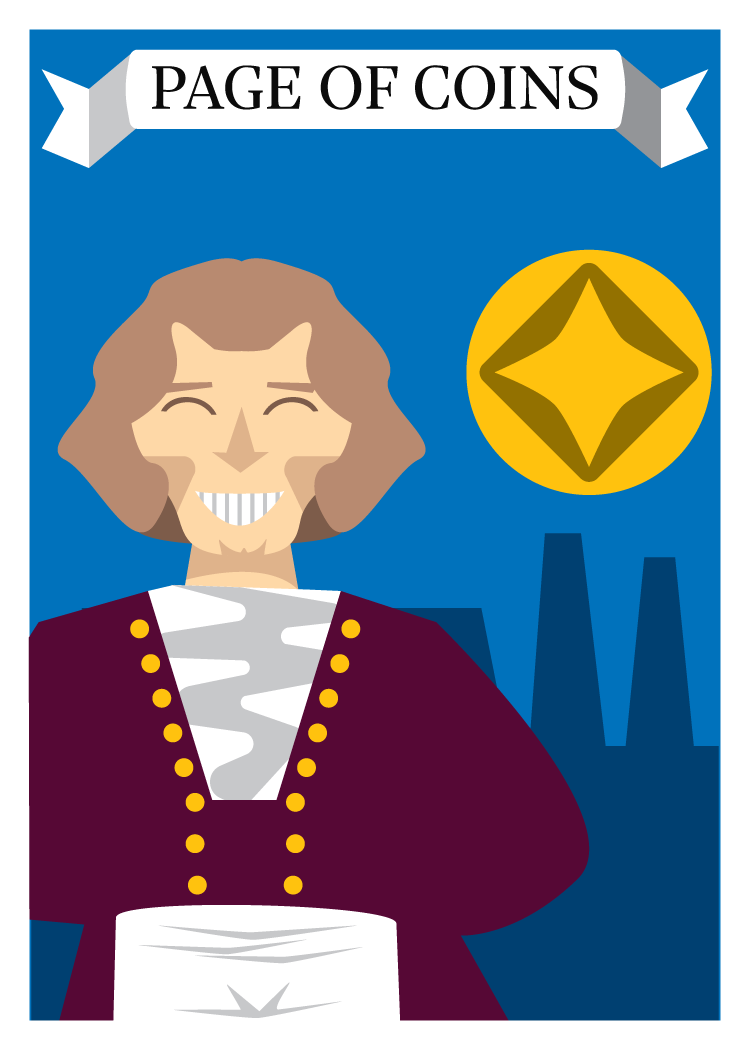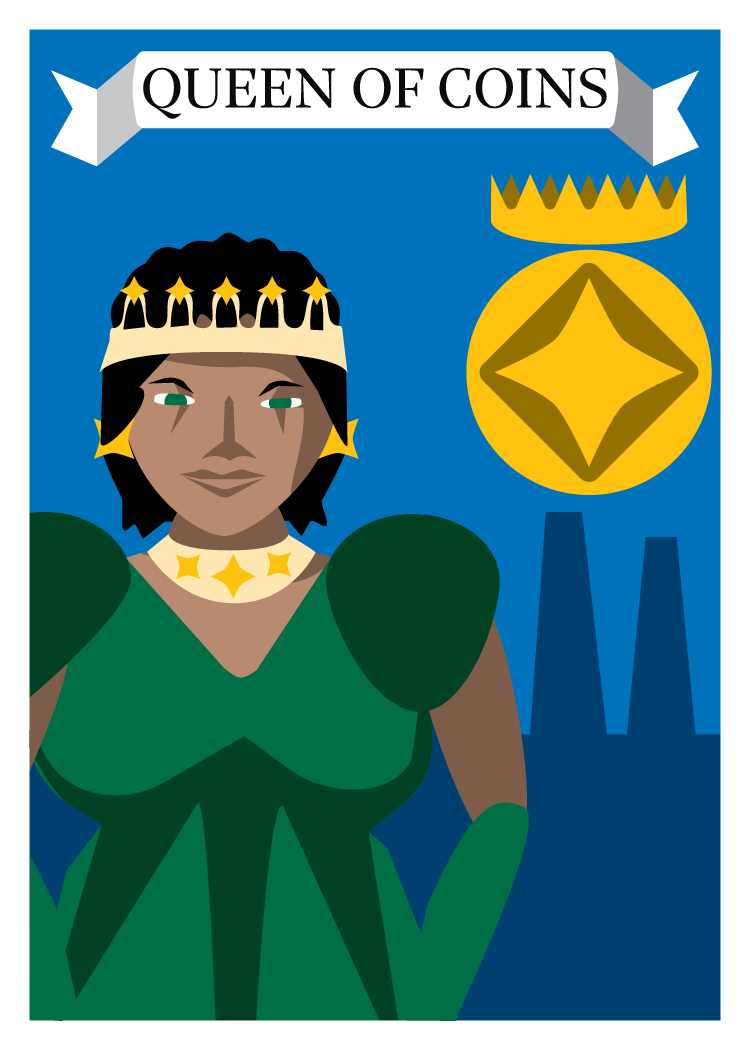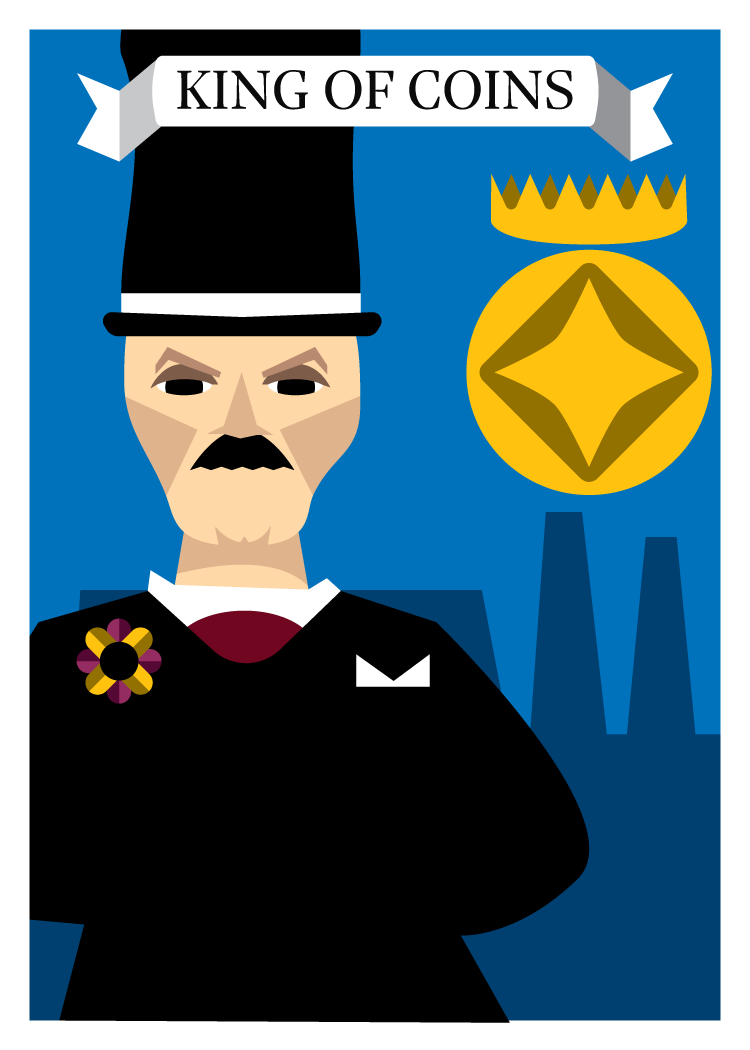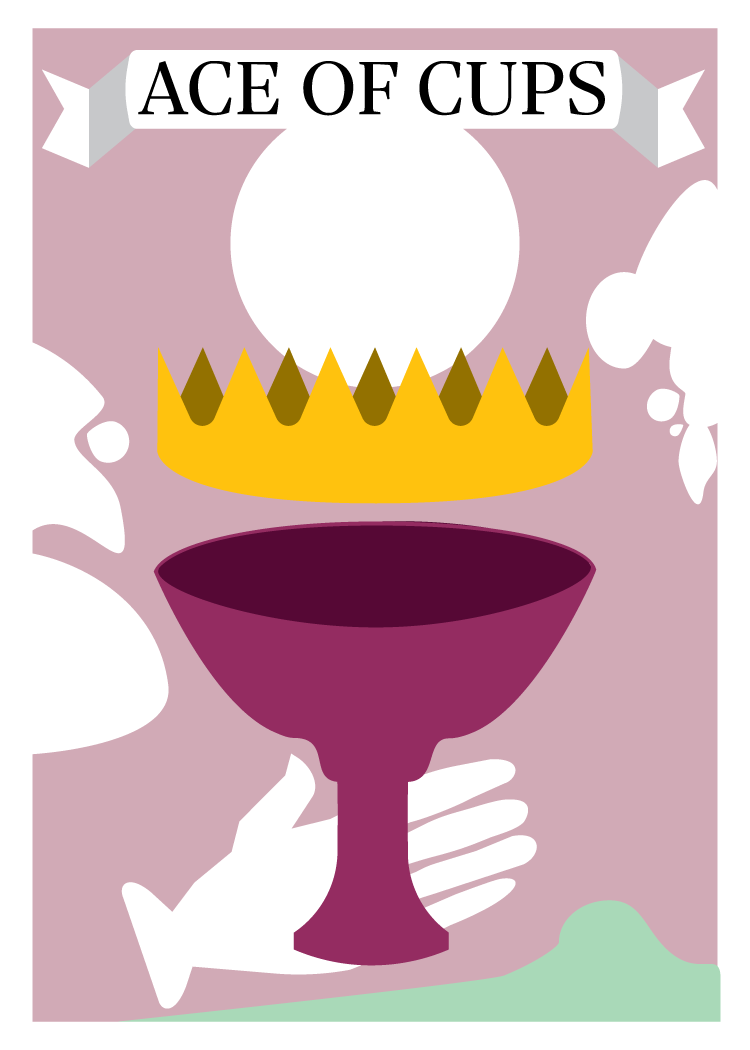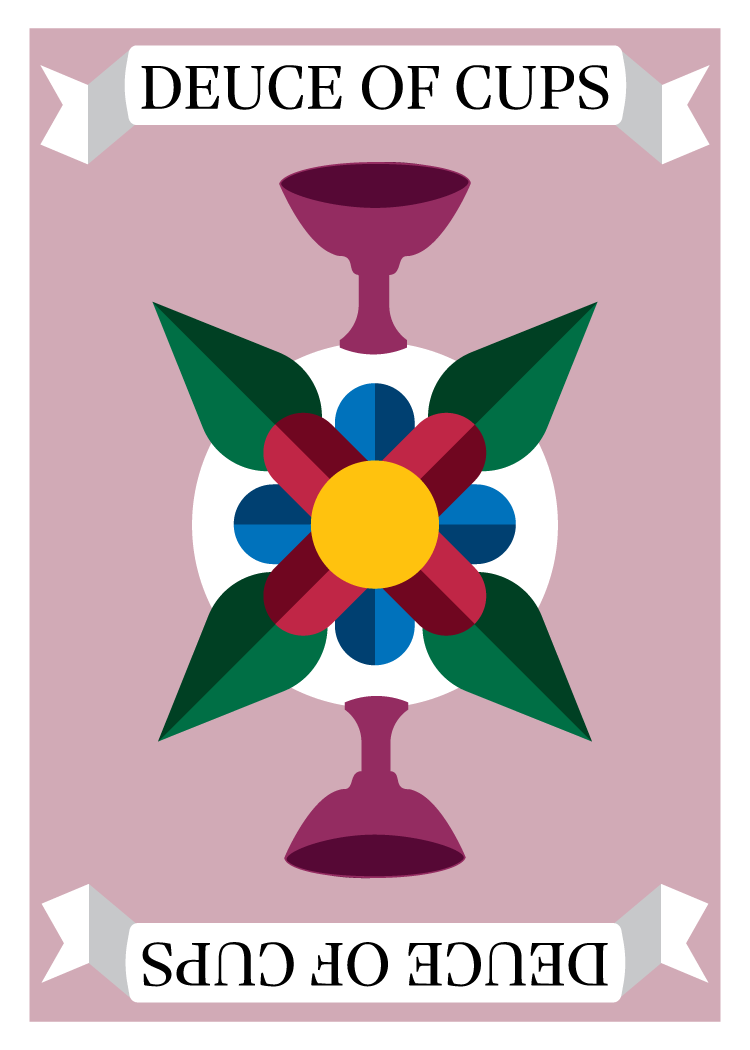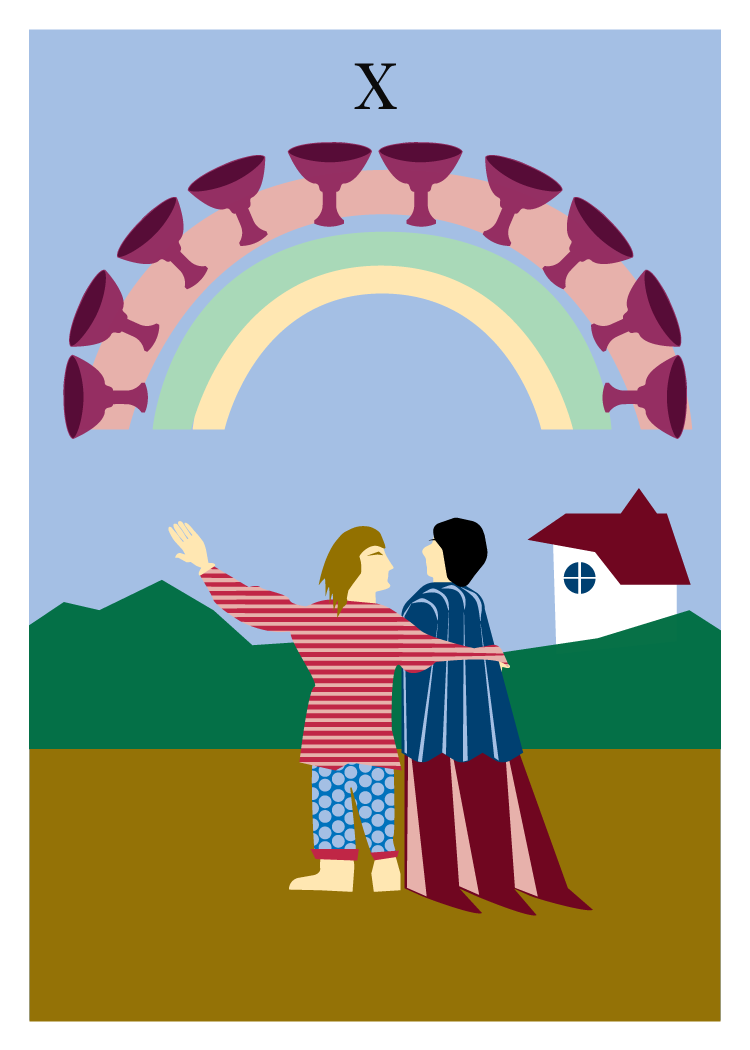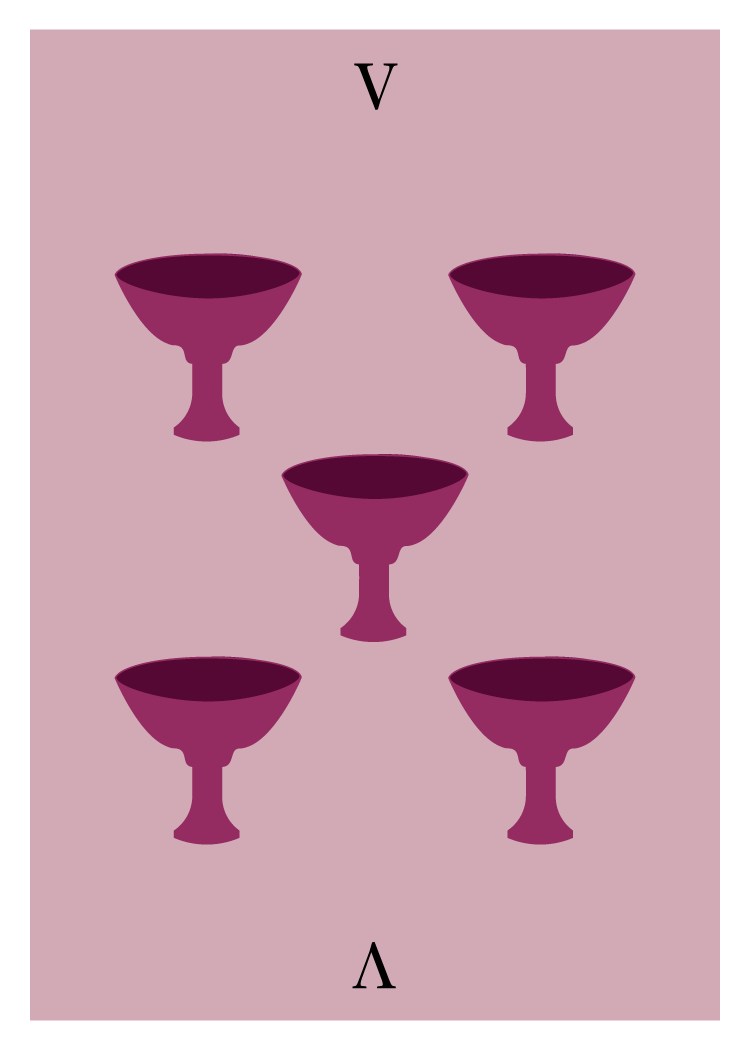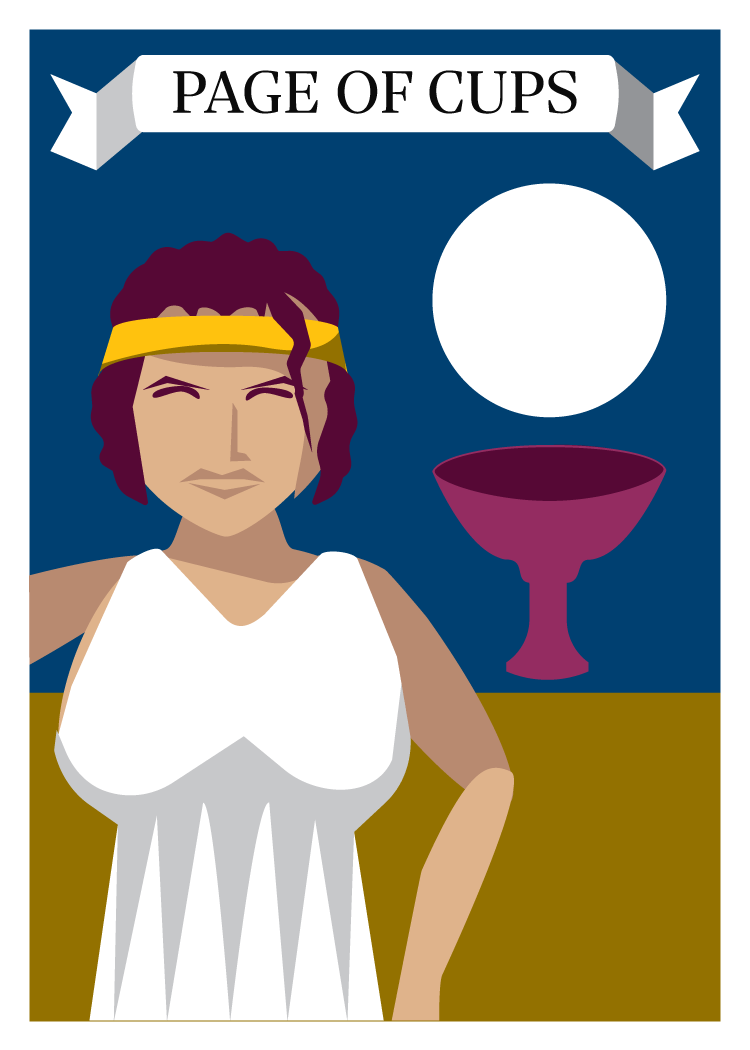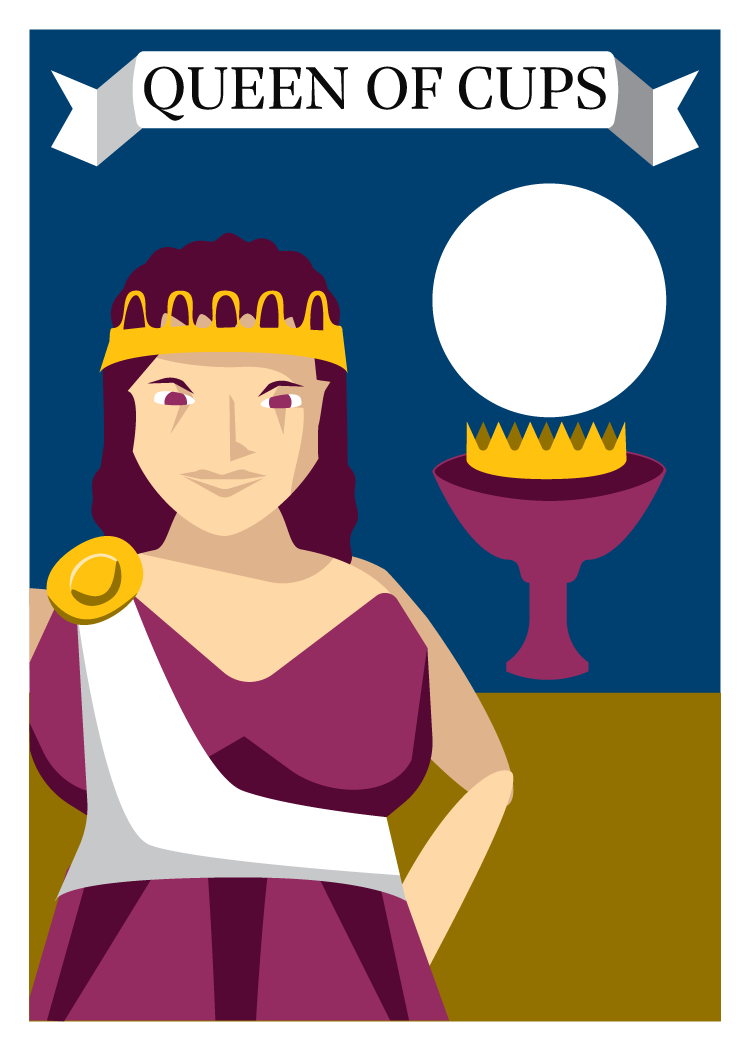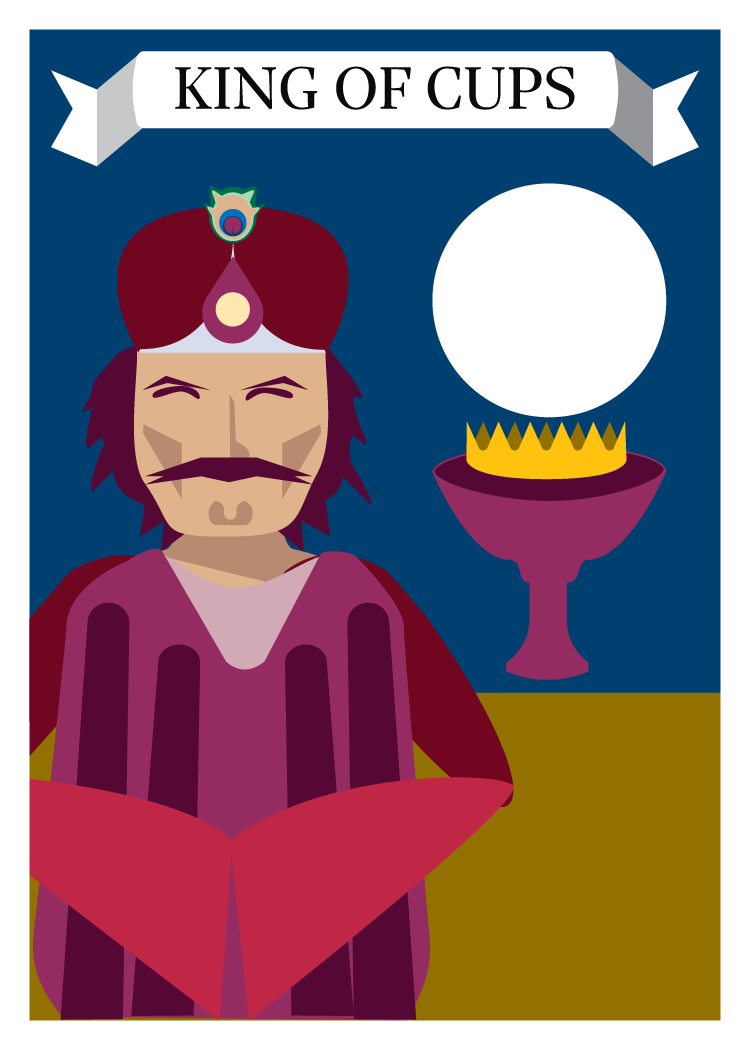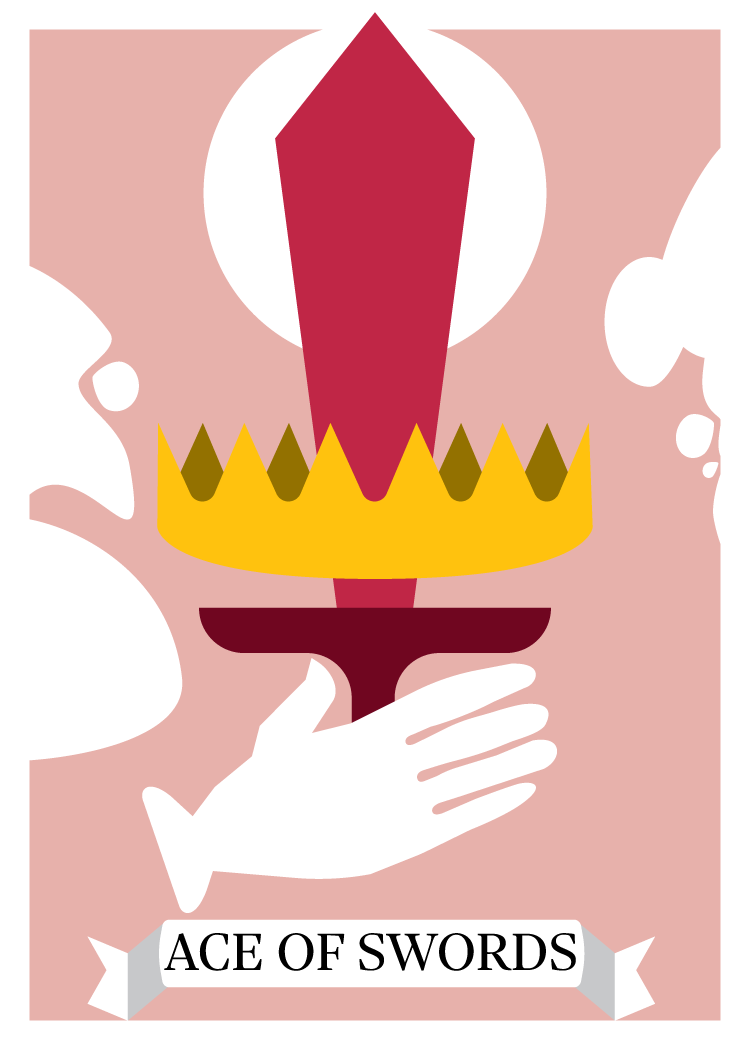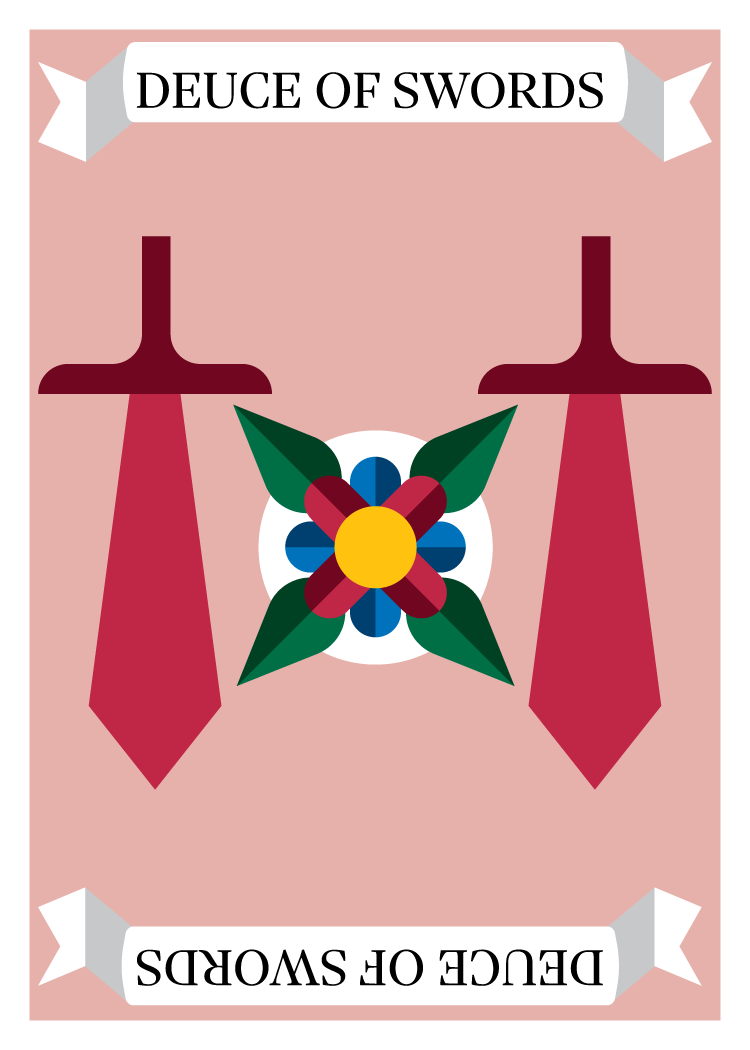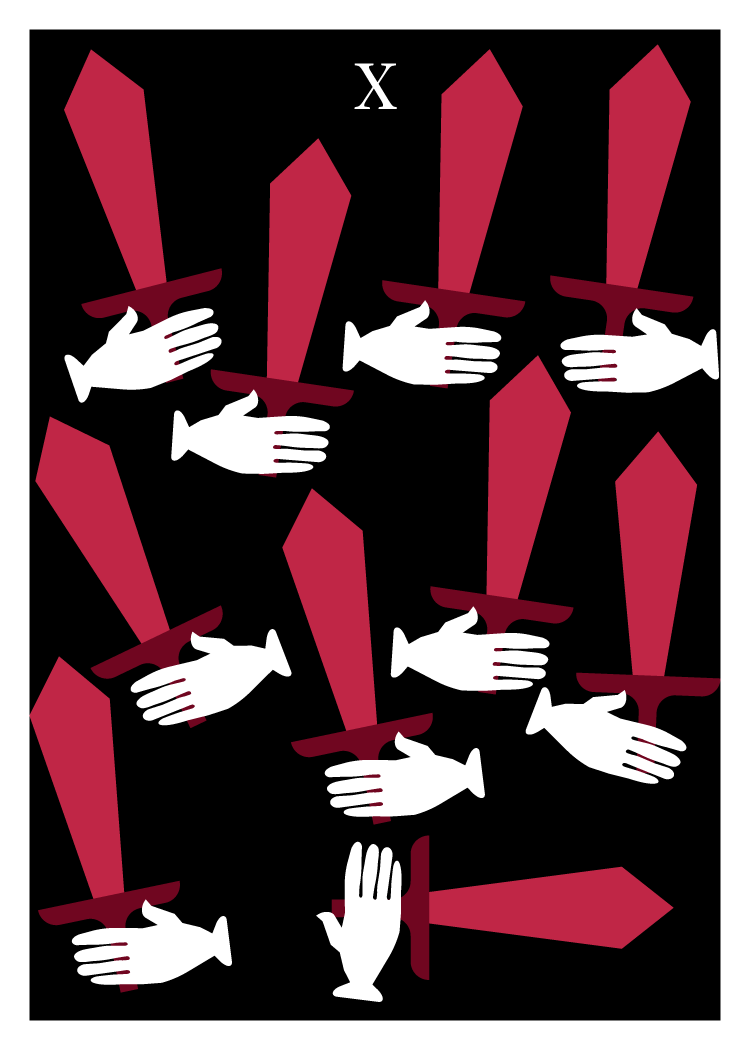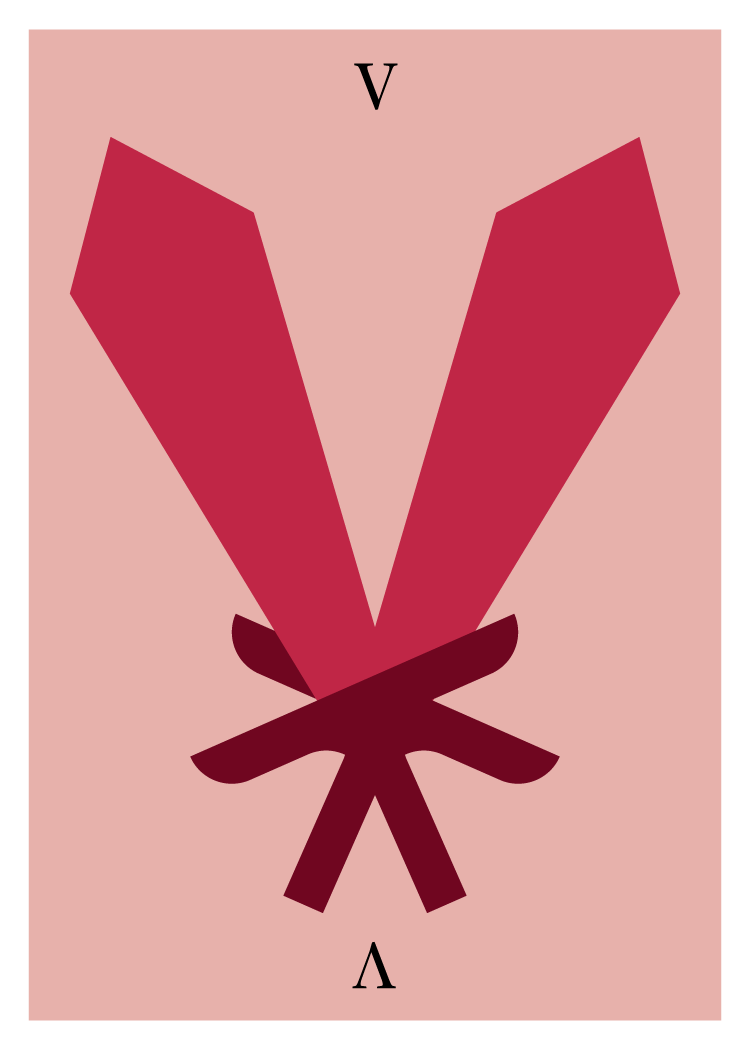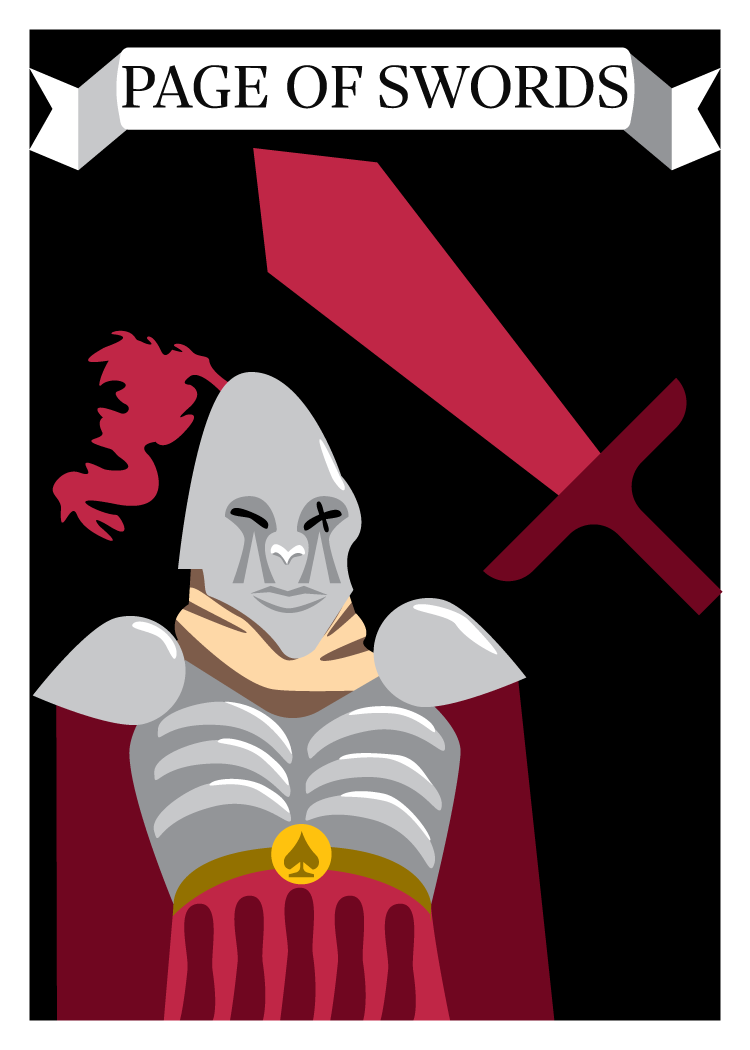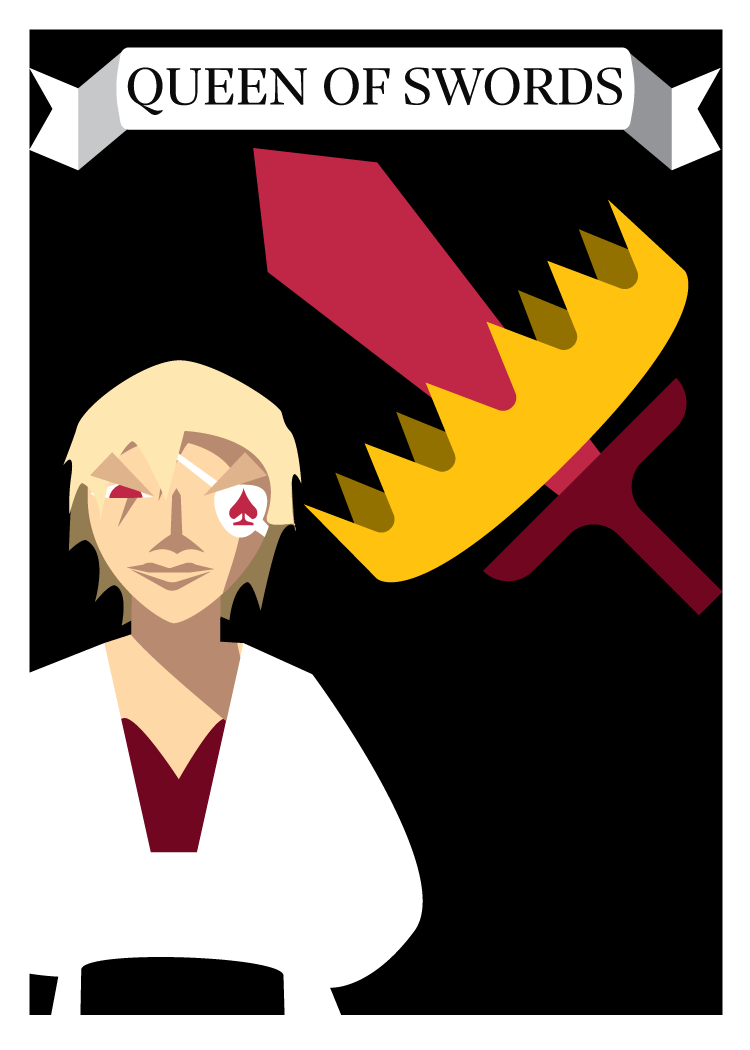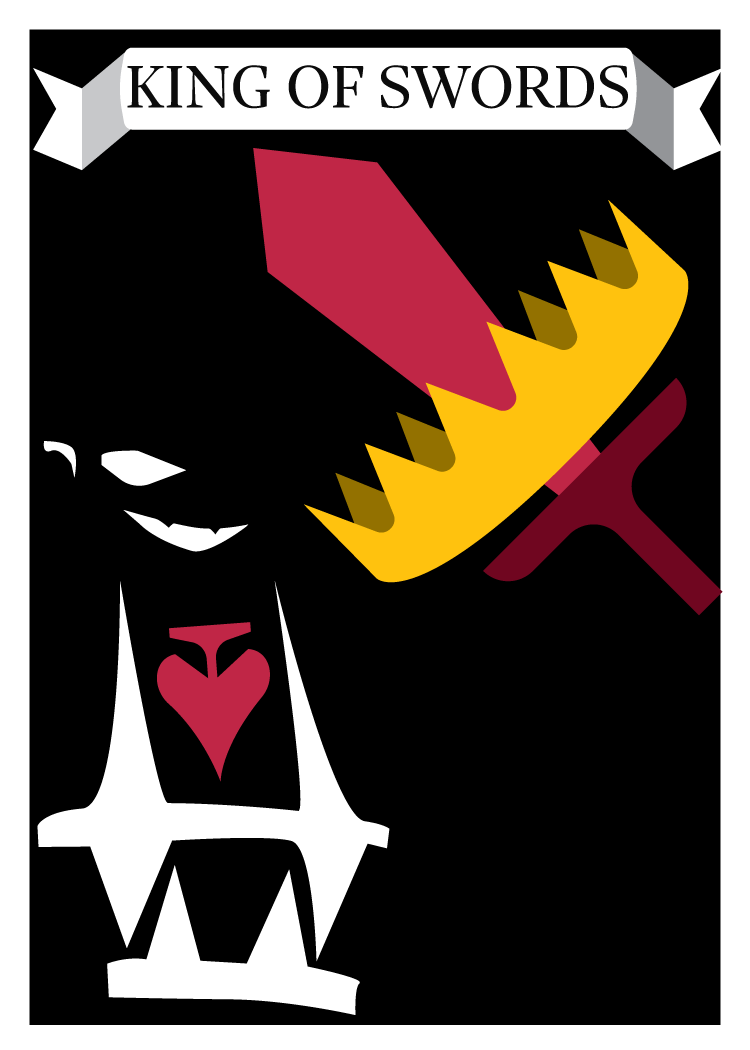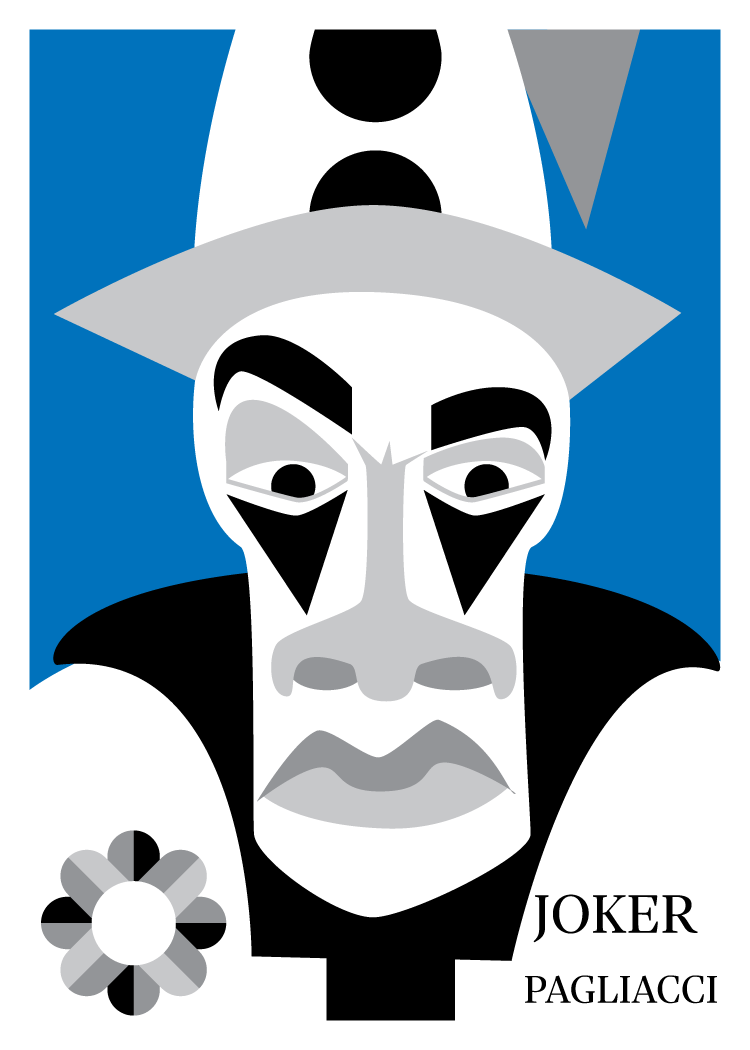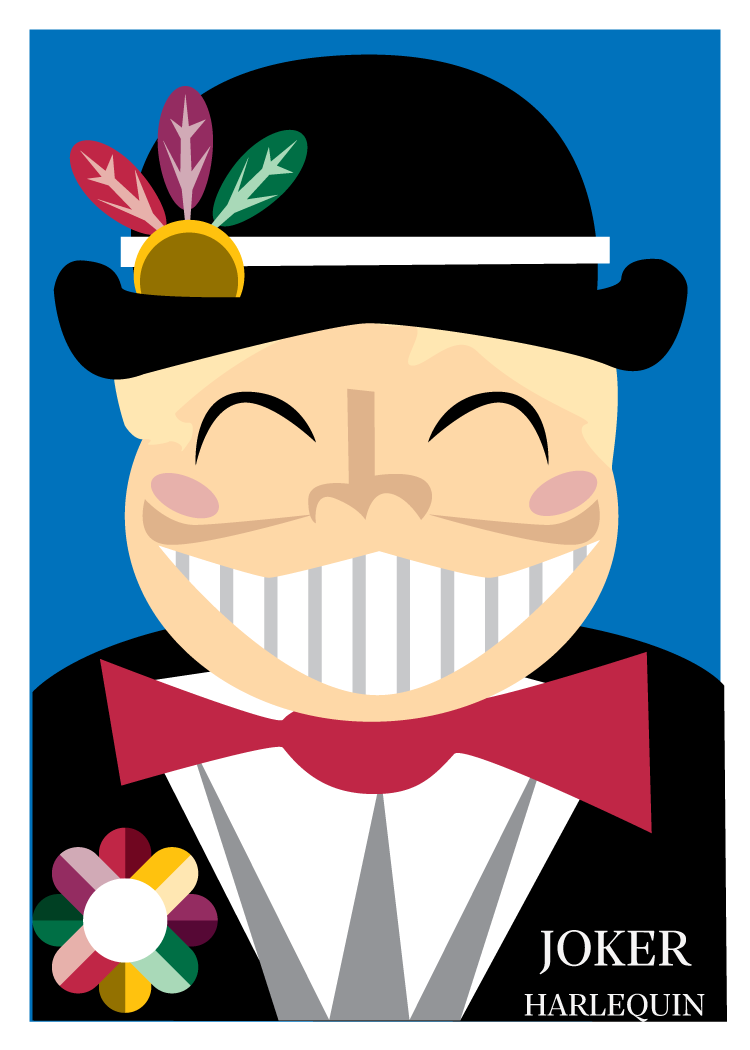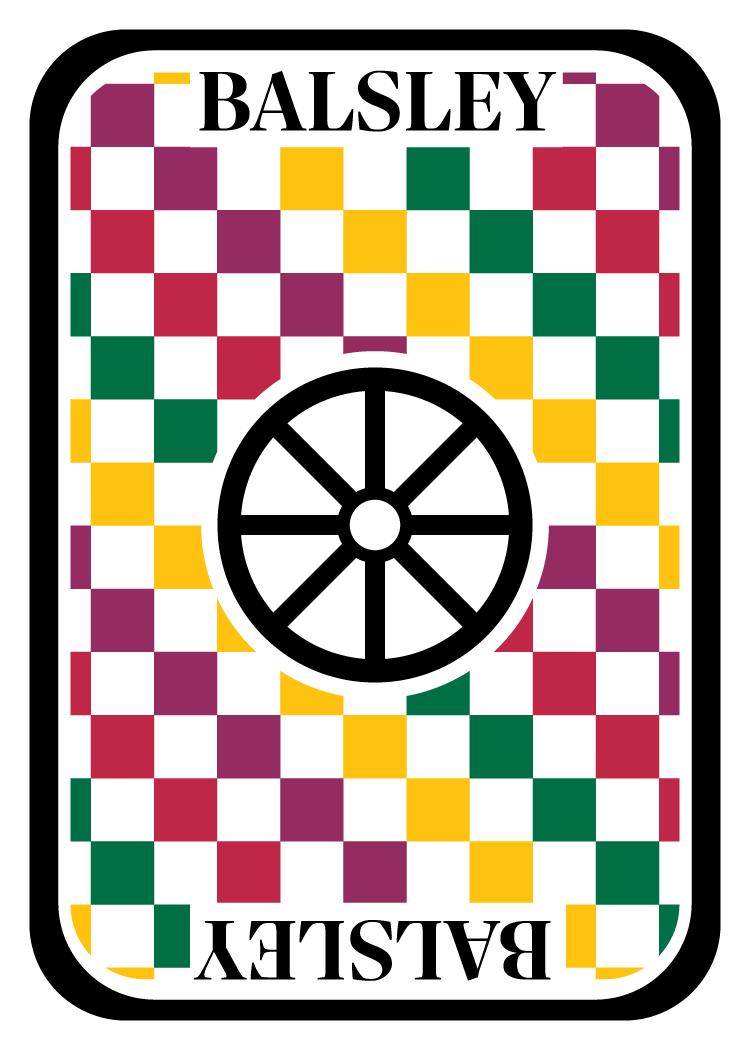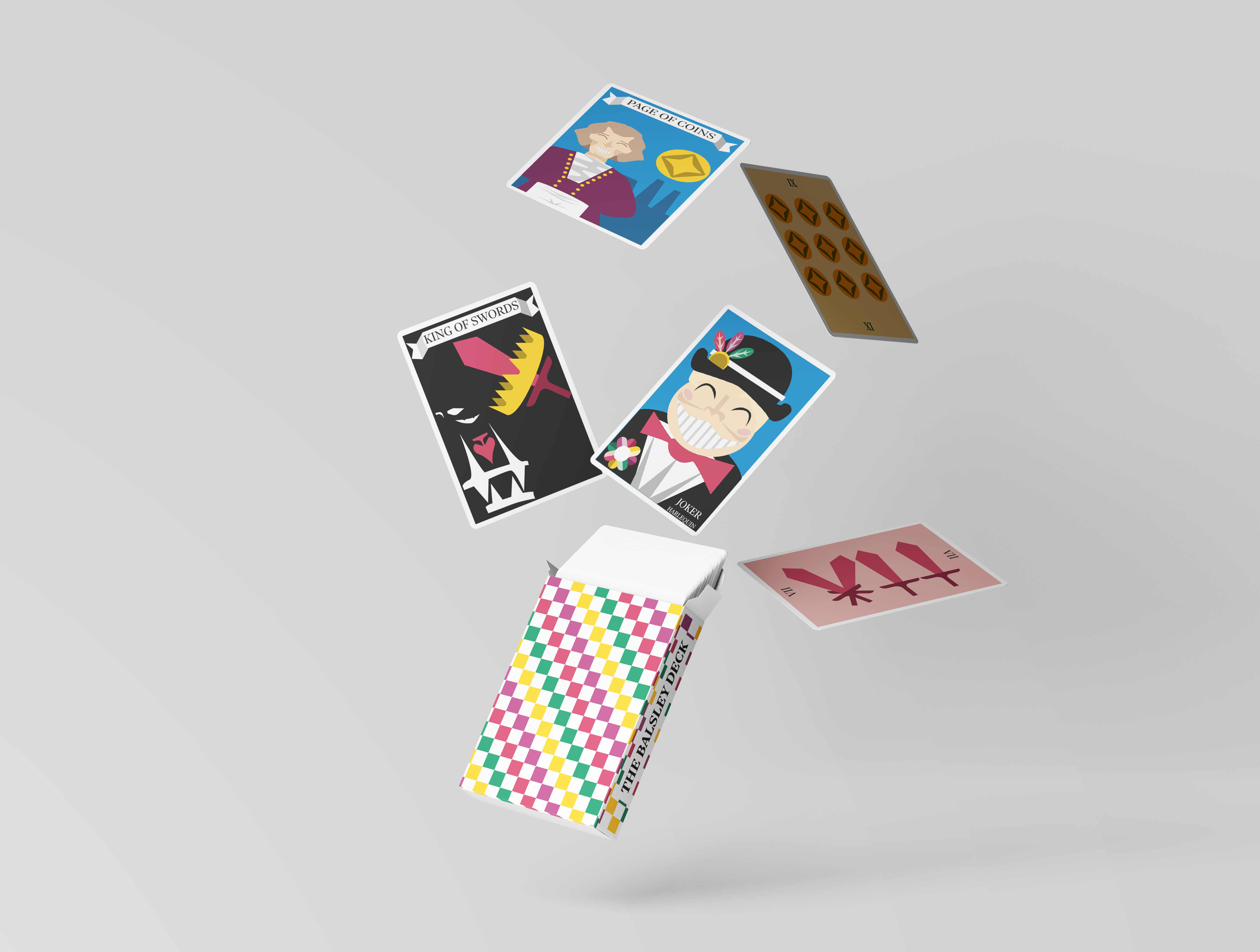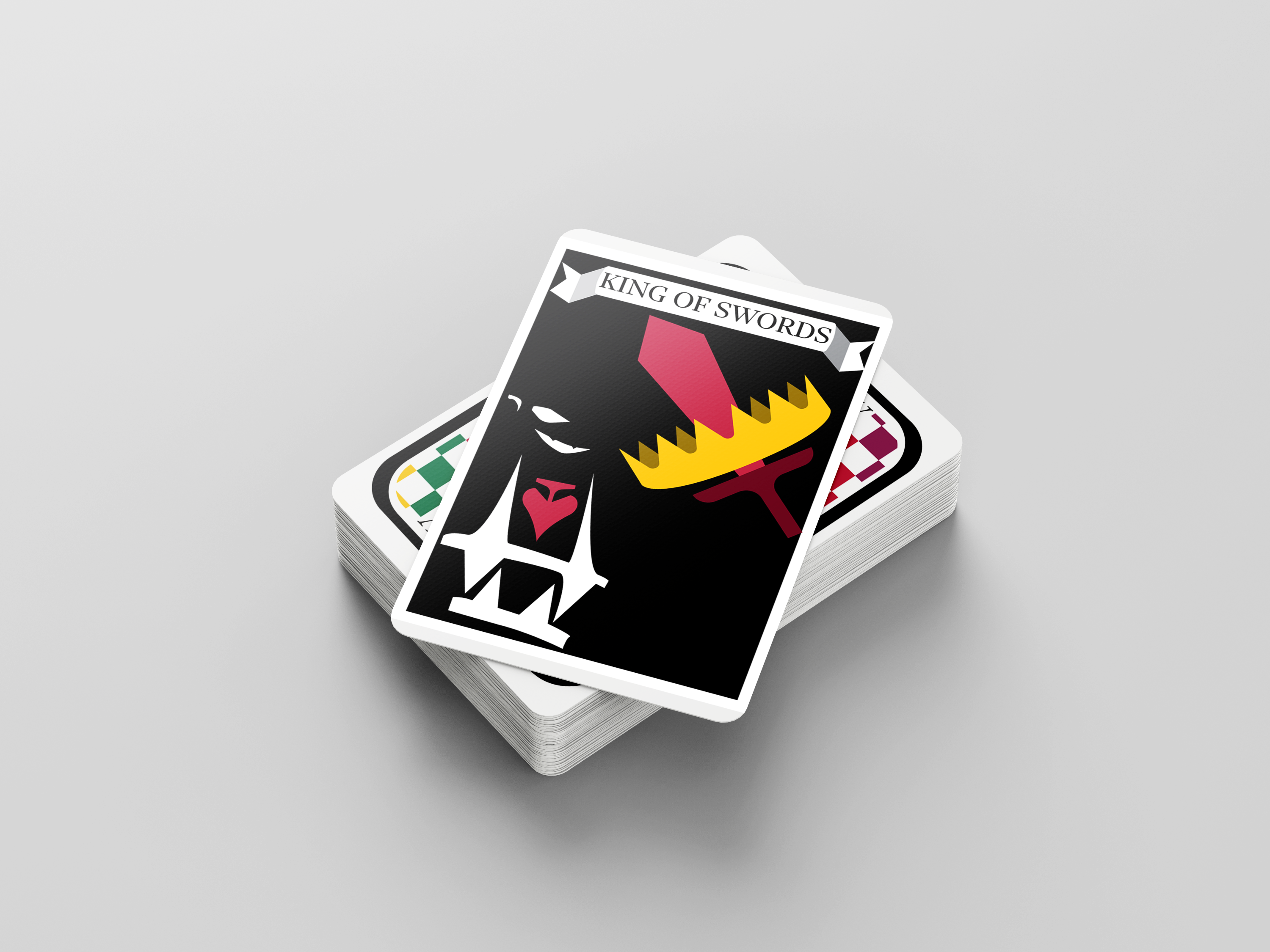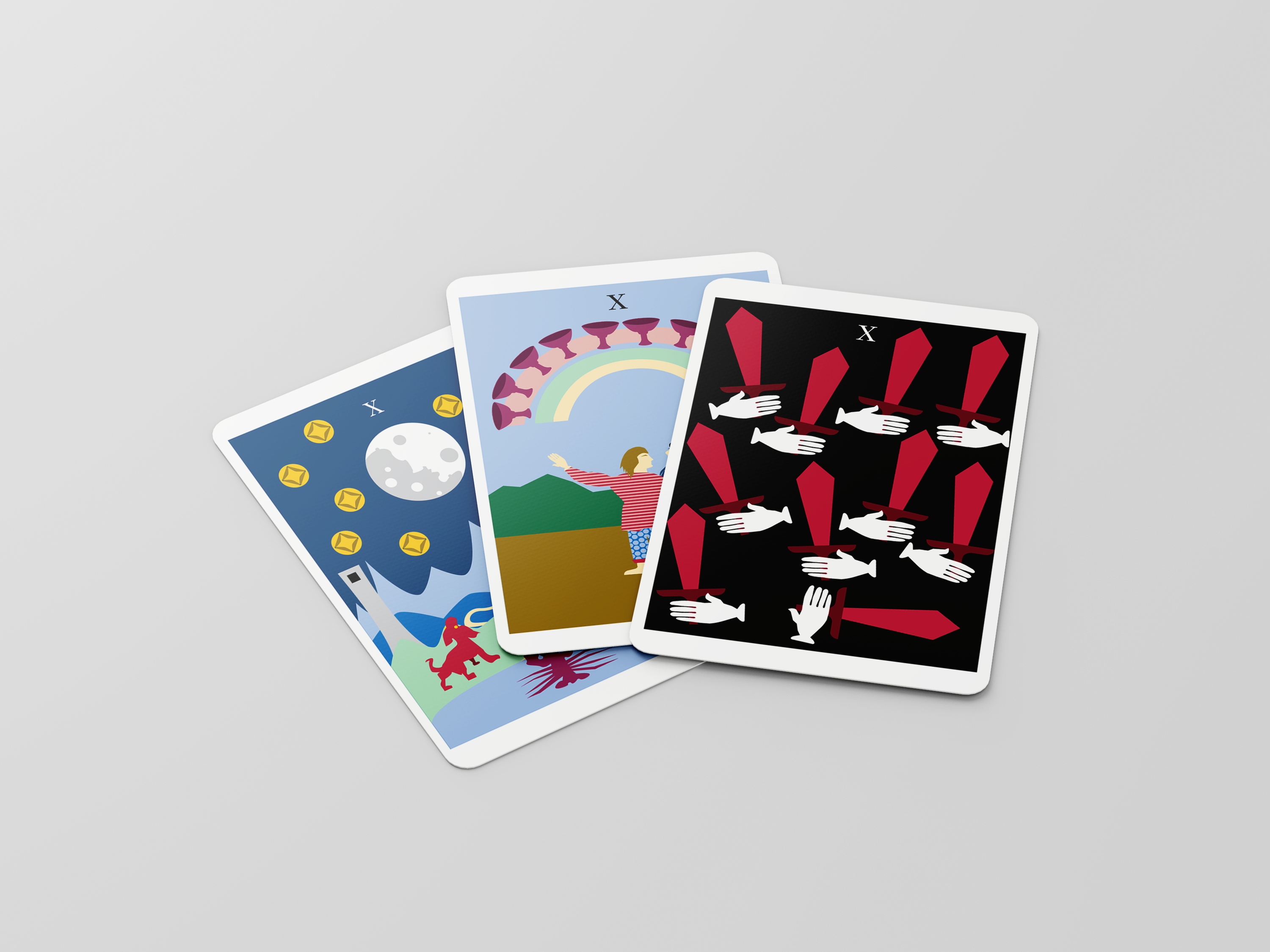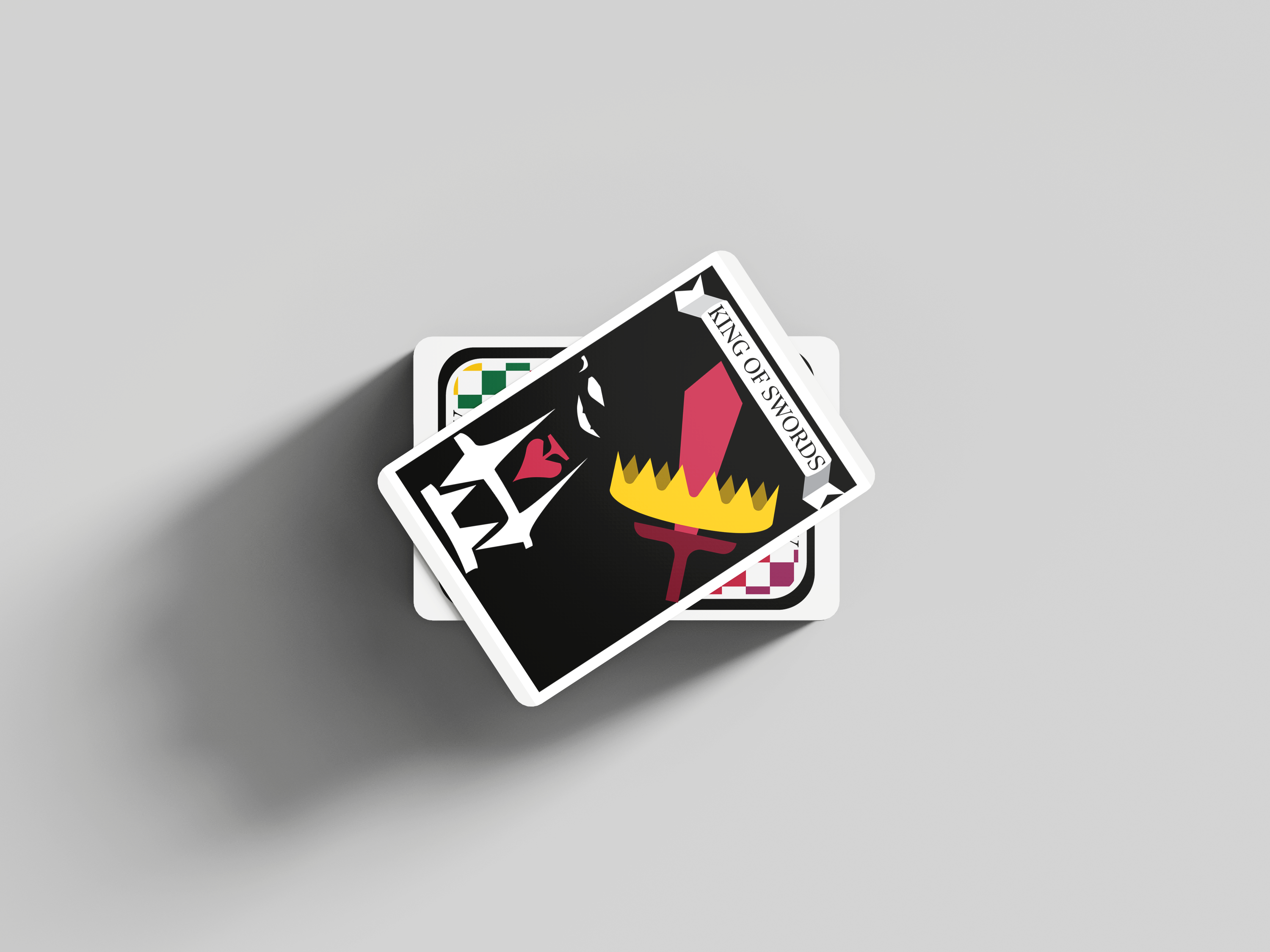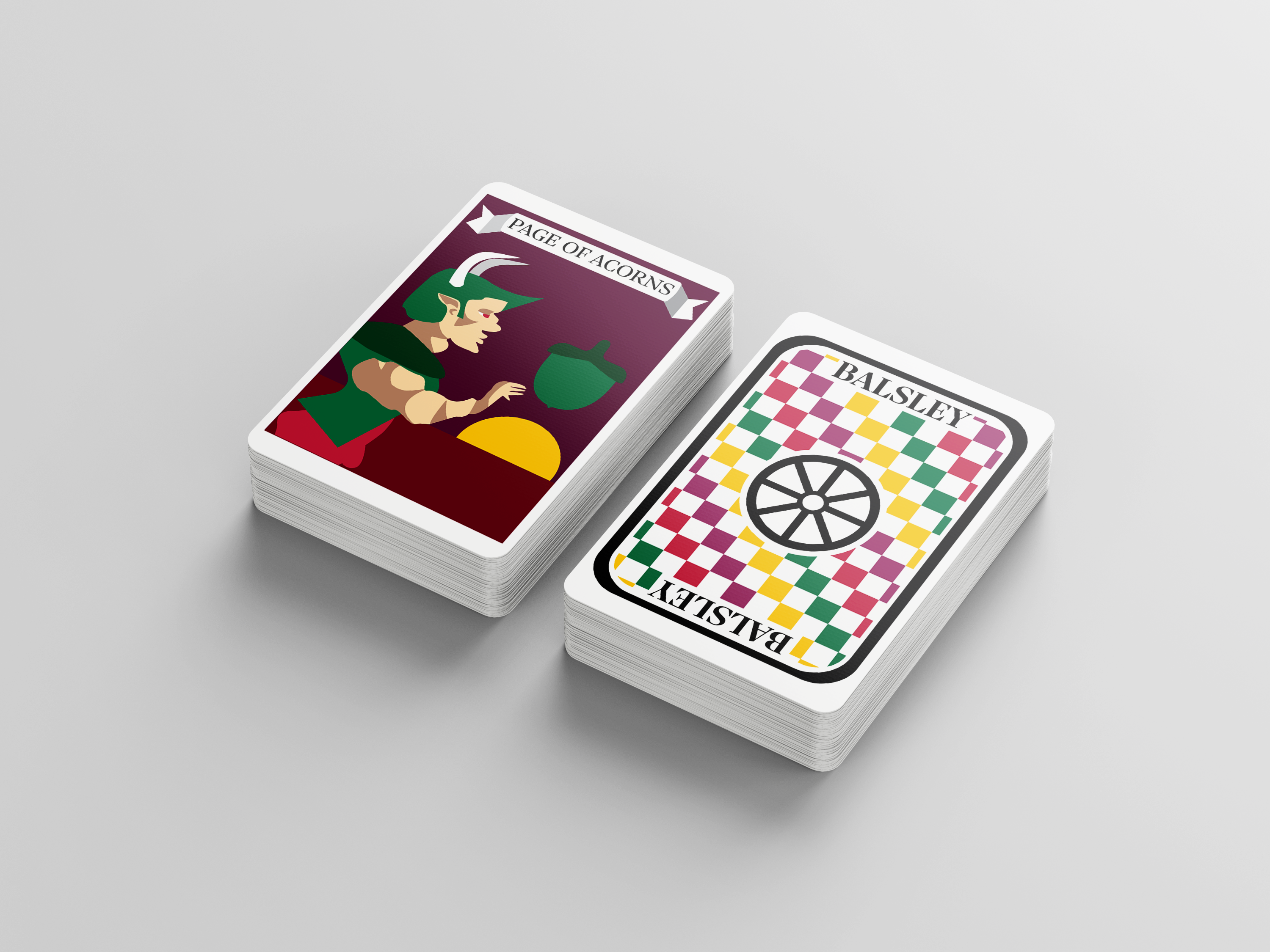Playing cards
The assingment was to design a full set of 54 playing cards with 4 suits of 13 and 2 jokers.
Research
I began by getting inspiration for the cards.
It is suspected that playing cards were invented in 9th century China for something called “leaf game”. The card traveled through to Persia where they took on a familiar form with pips and face cards. In Egypt around the 11th century a third face card was added which brought the deck total to 52 and the four suits of sticks, coins, cups, and swords which would be style across most of Europe when they traveled there, probably through Spain, in the 14th century.
Playing cards as we understood them were more or less set in stone at this time but would continue their refinement with several innovations (such as backs, rounded edges, and the white trim) and changes (such as reversible face cards) we take for granted.
The French deck with the Spade, Club, Heart, and Diamond became the standard style in England, and then in the United States some time in the late 18th or early 19th century.
The United States invented the Joker as a distinct “trump card” during the civil war.
While all of this was happening, another thread was unravelling. Starting in 1377, John of Rheinfelden, puts a significance on the cards as being explanatory for the world which doubtless planted the seeds of mystery in the cards.
As the centuries went on an alternative sub culture of cartomancy grew. “Readers” began to detail their record of mystical card history as they told the future with tarot which itself began as a type of playing card.
Each successive reader and their decks compounded into a rich mystical tradition which pulled many elements and previous decks and the insights gleaned from peers. The most famous of these decks is doubtless the beautiful Rider-Waite tarot deck. The 78 card deck had 56 “minor” and 22 “major arcana and it has left an indelible mark on our culture.
All of this history, from the dead ends innovation left behind, vestigial quirks, and utterly alien ideas which belie the humble playing card formed a rich ground for me to grow my new deck.
